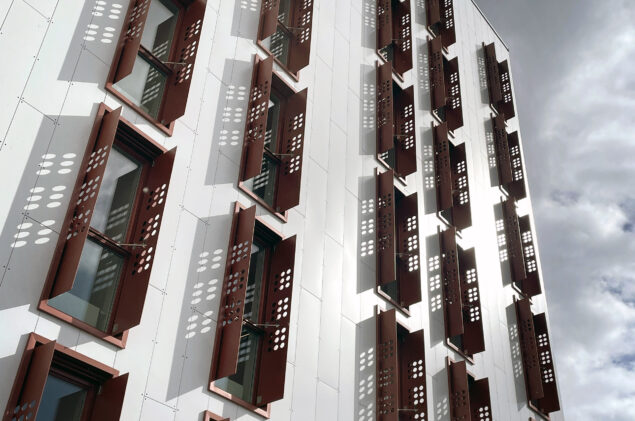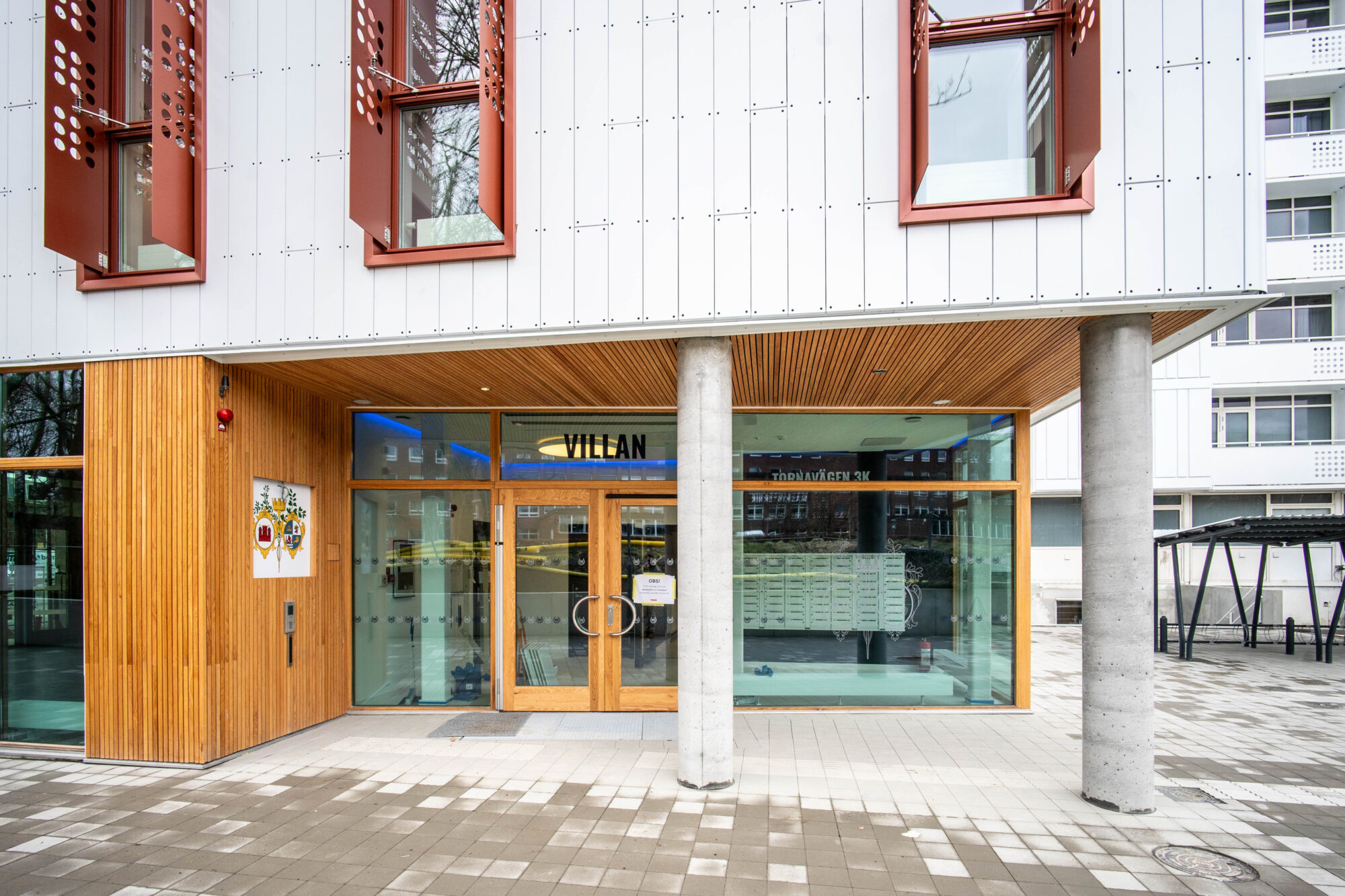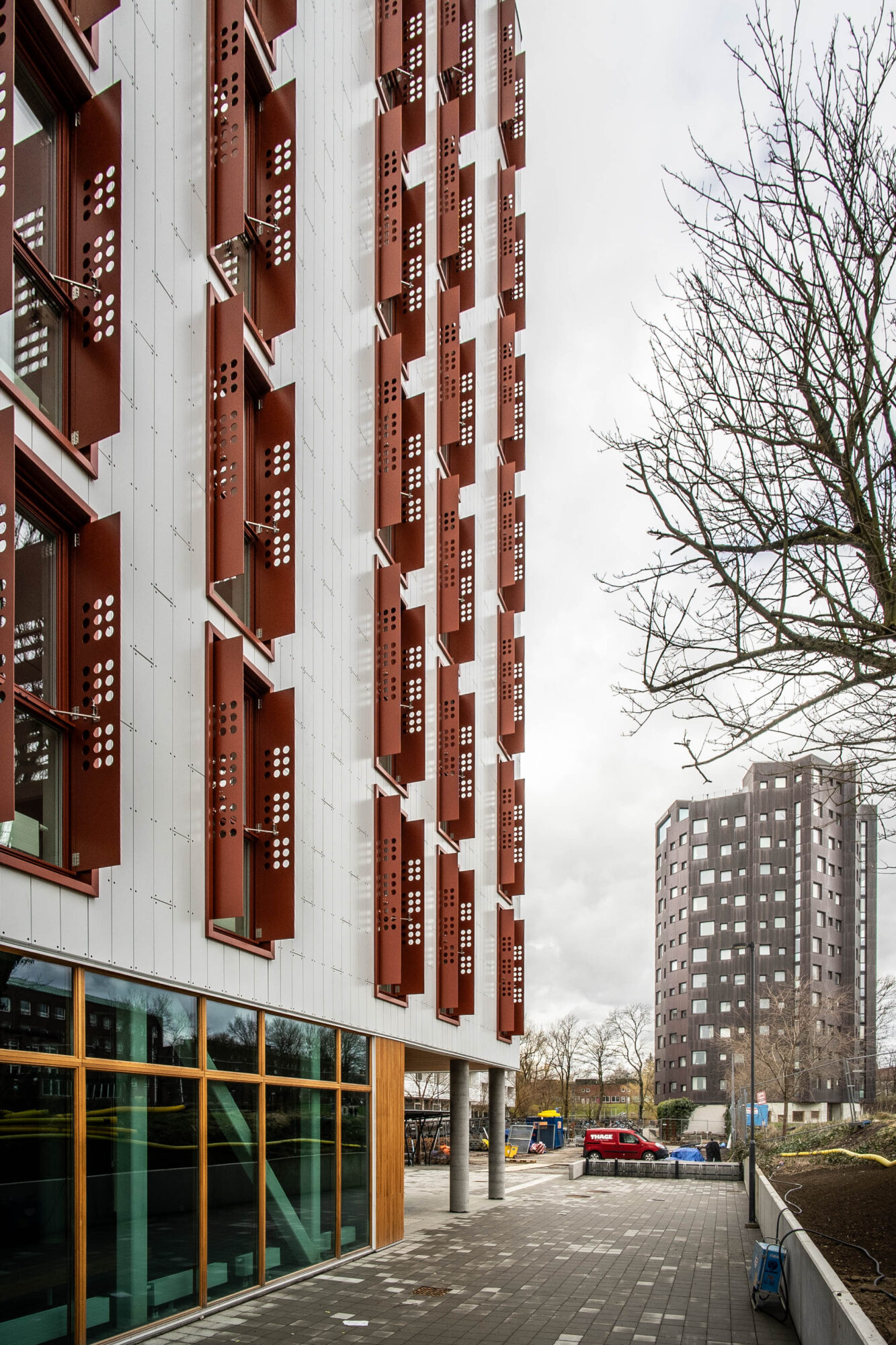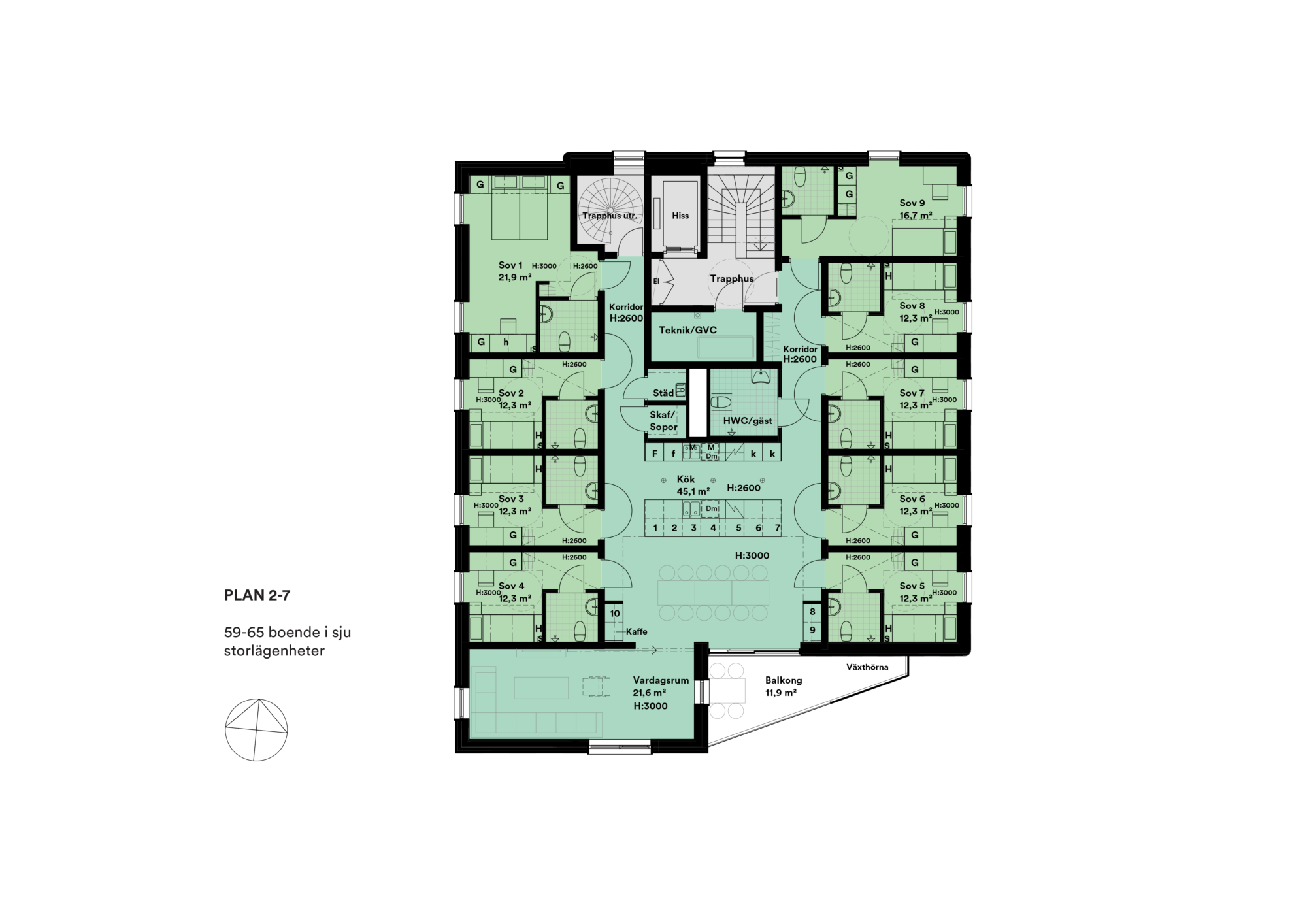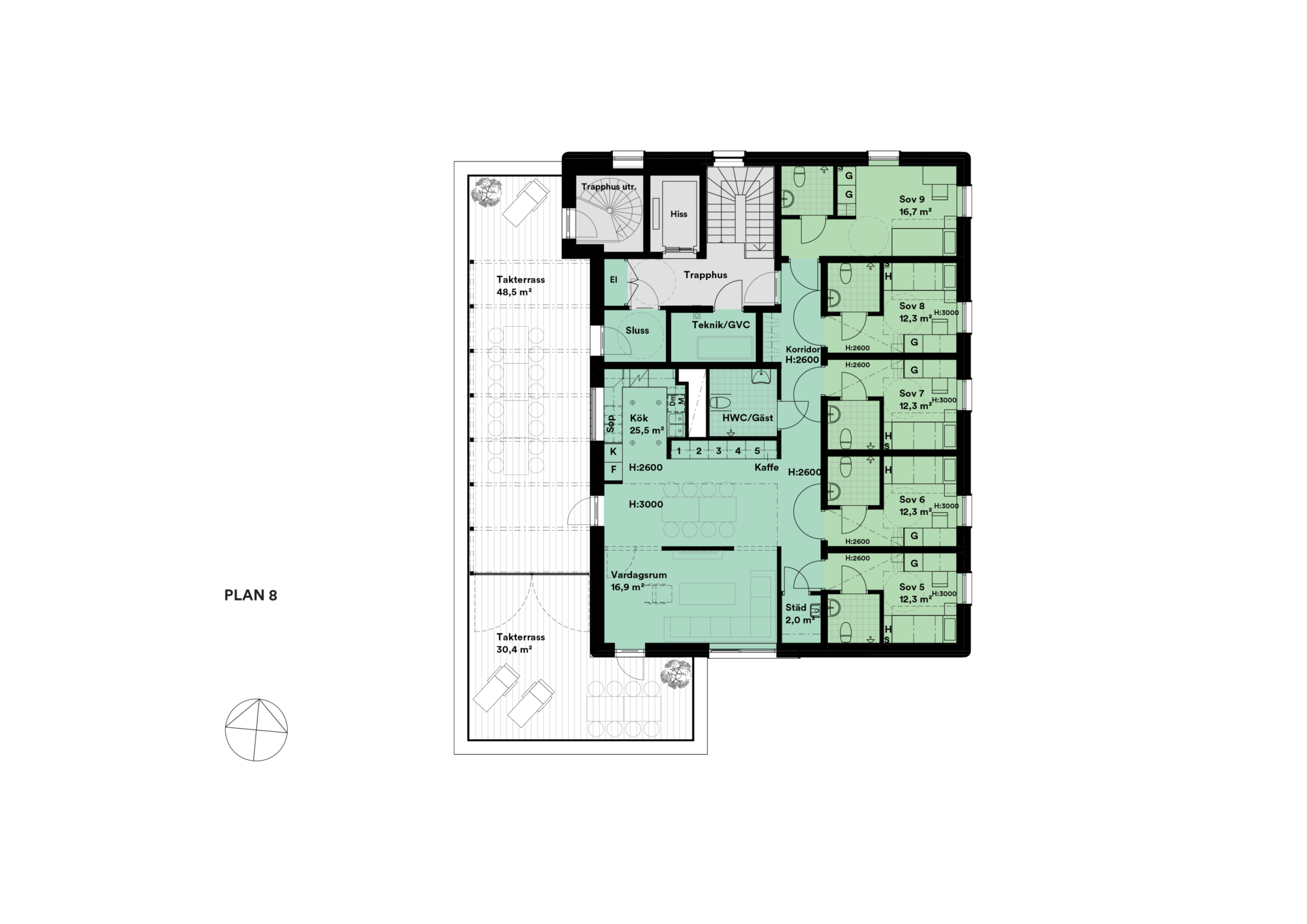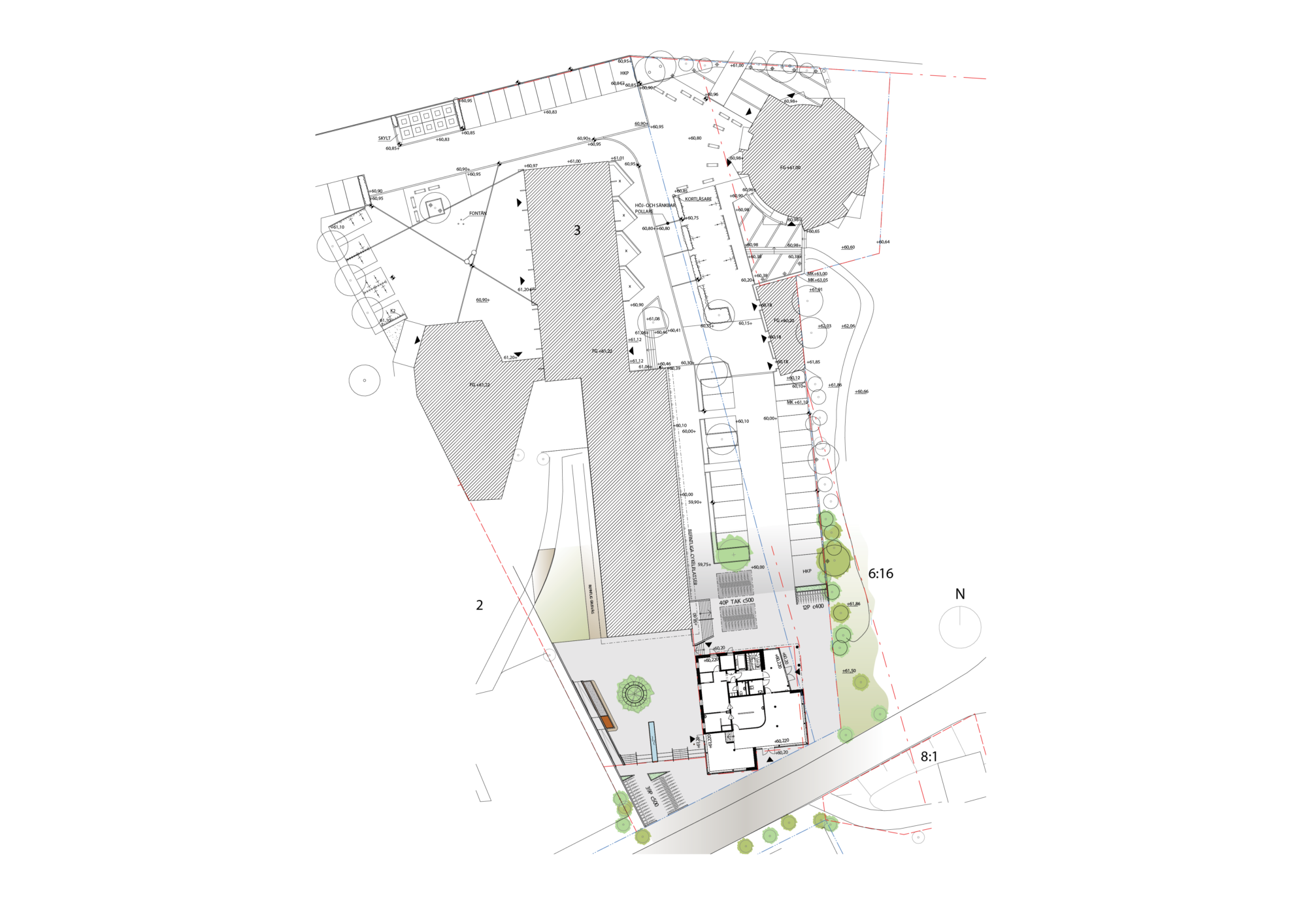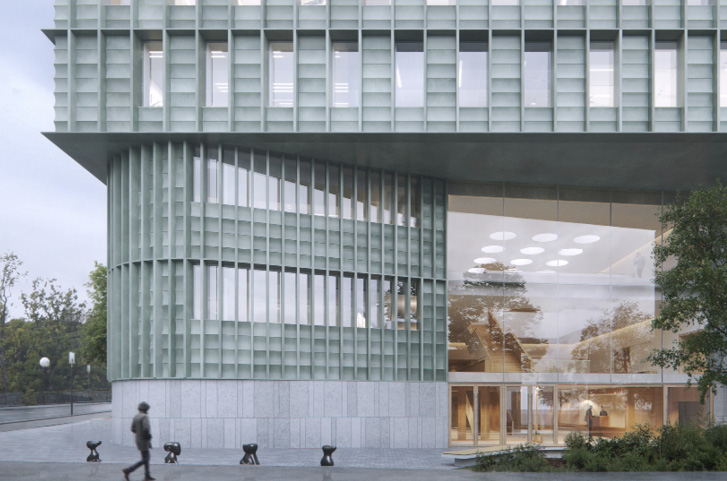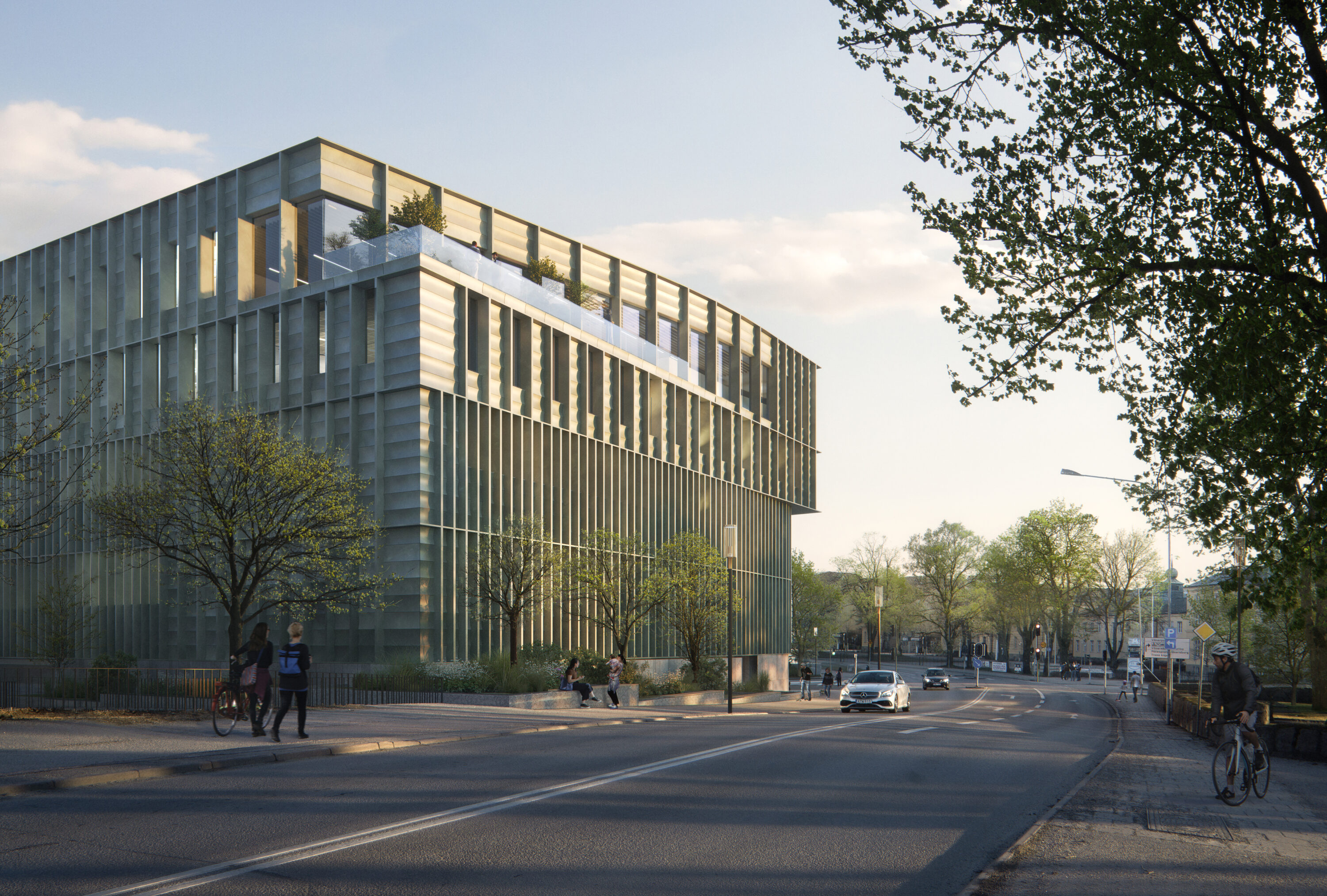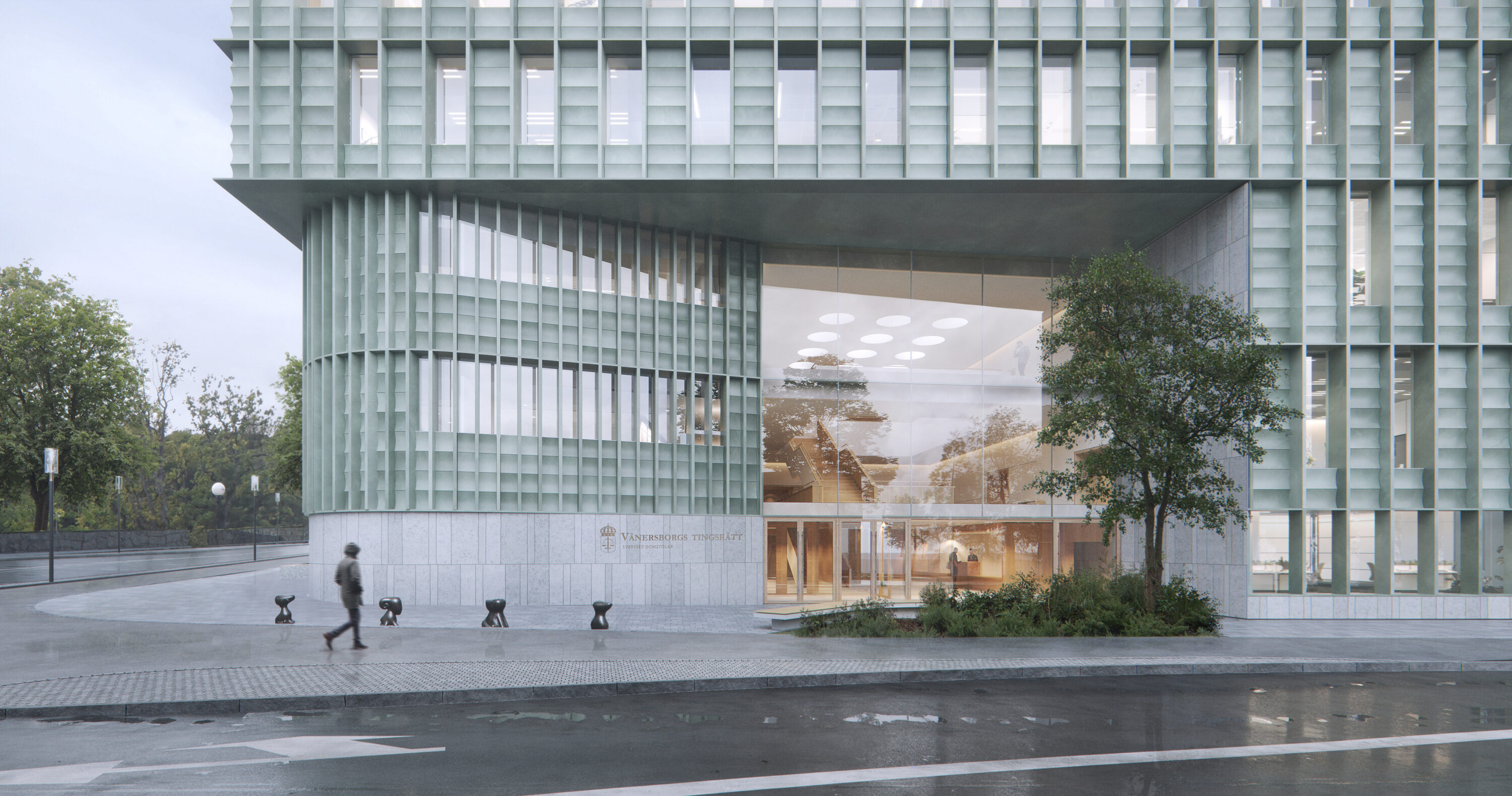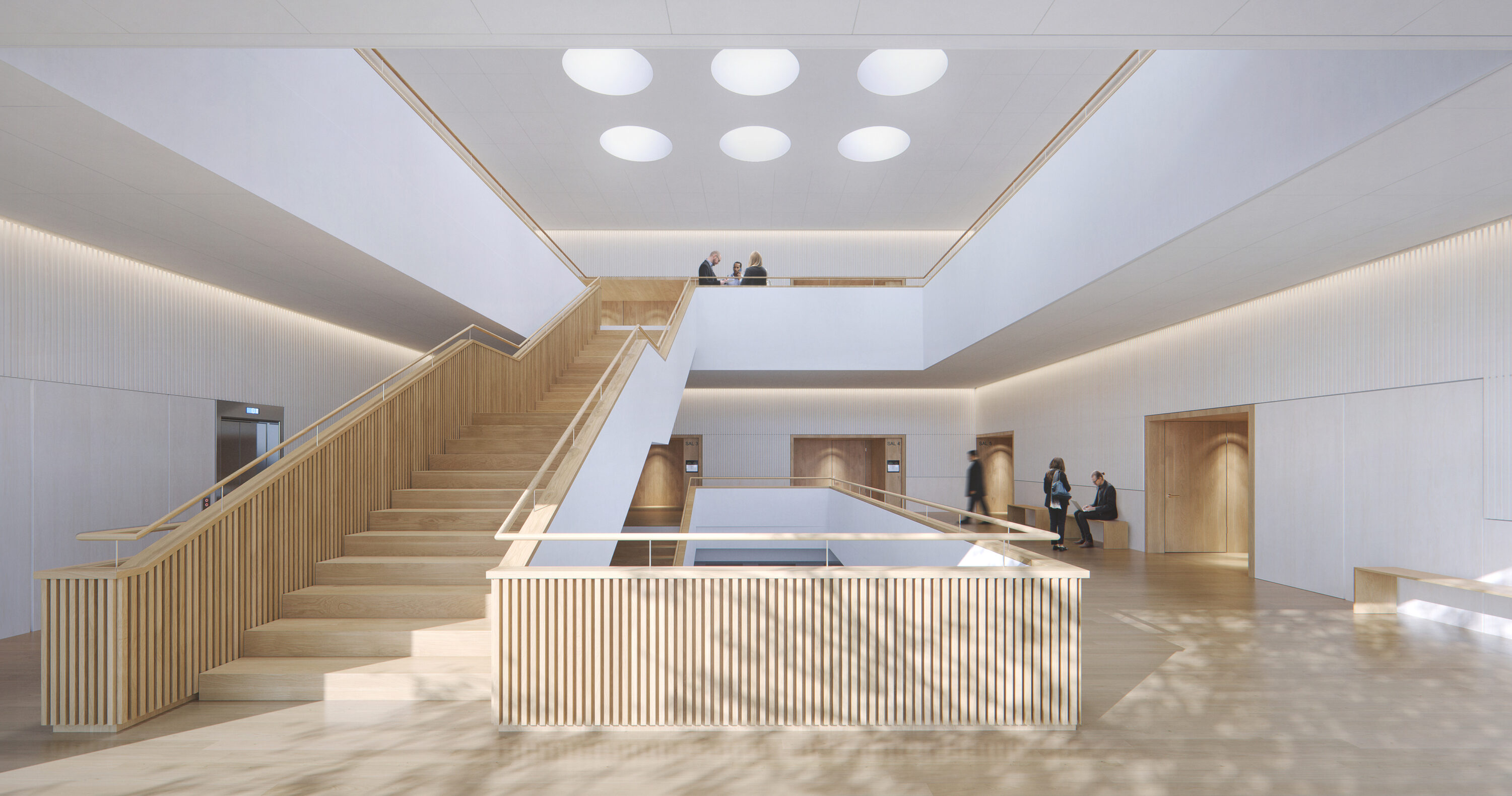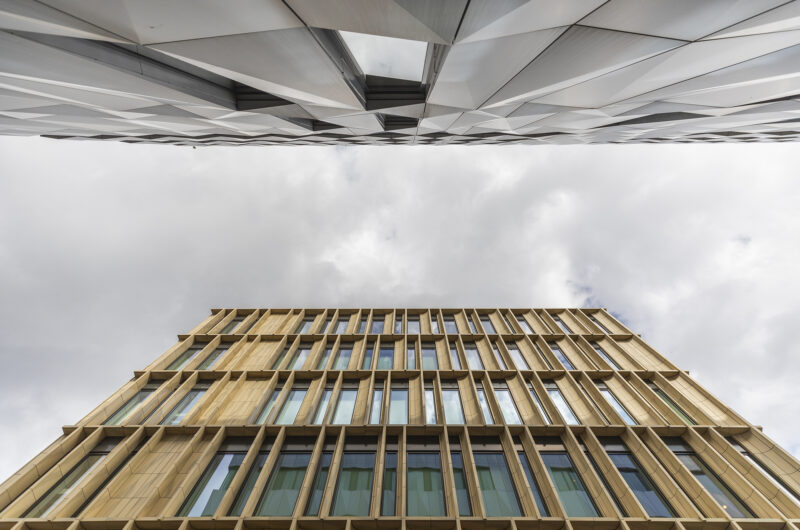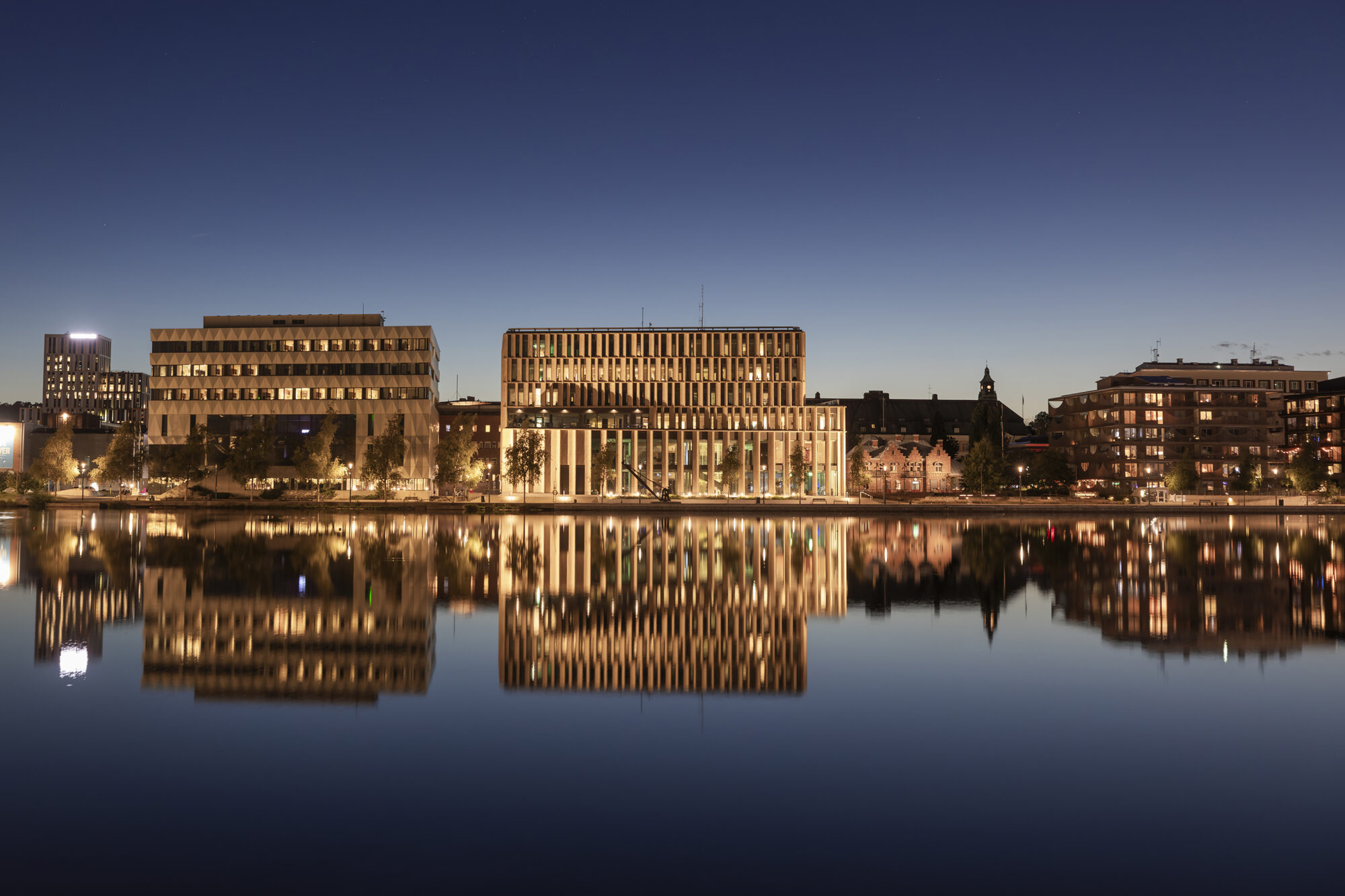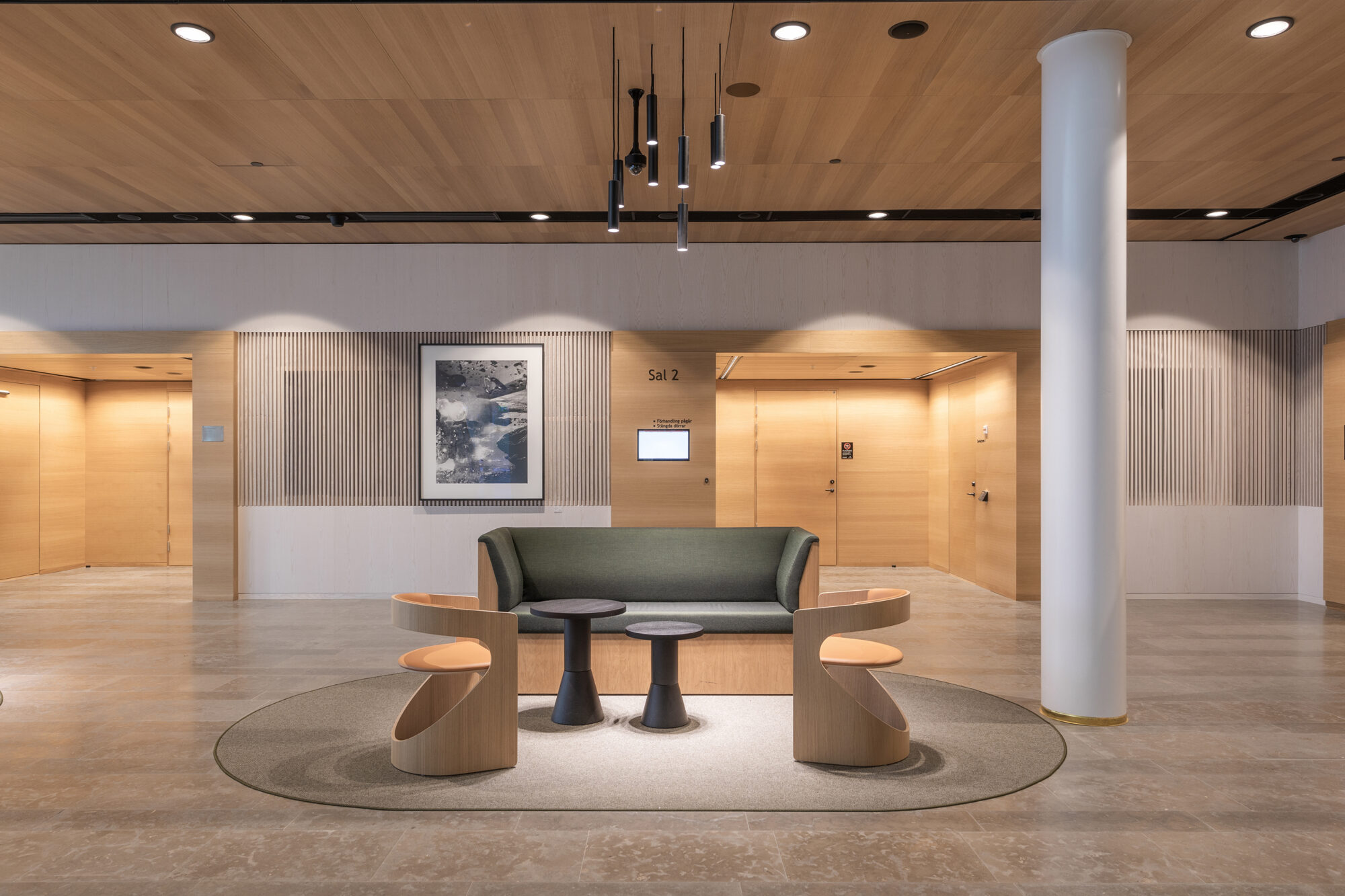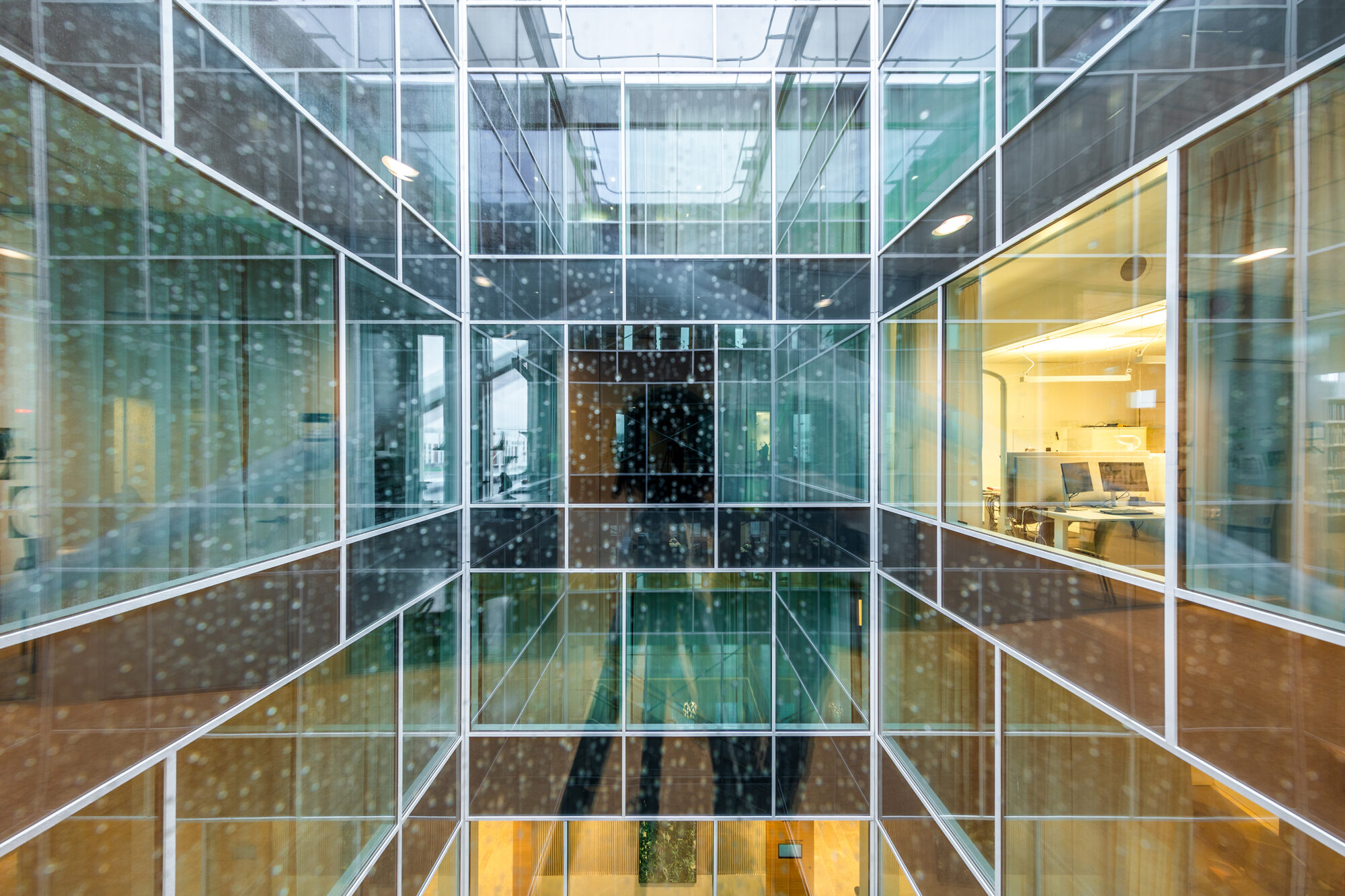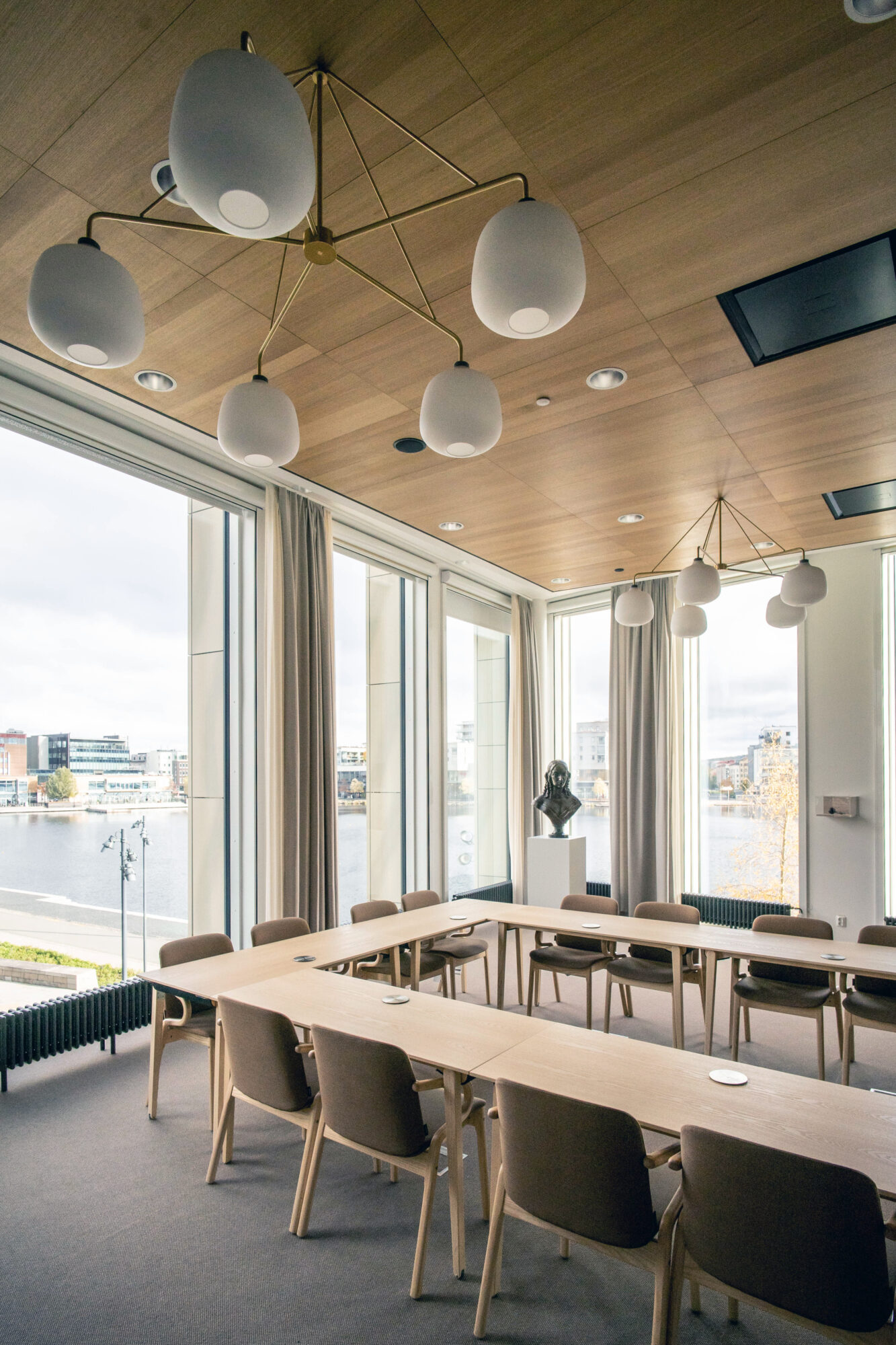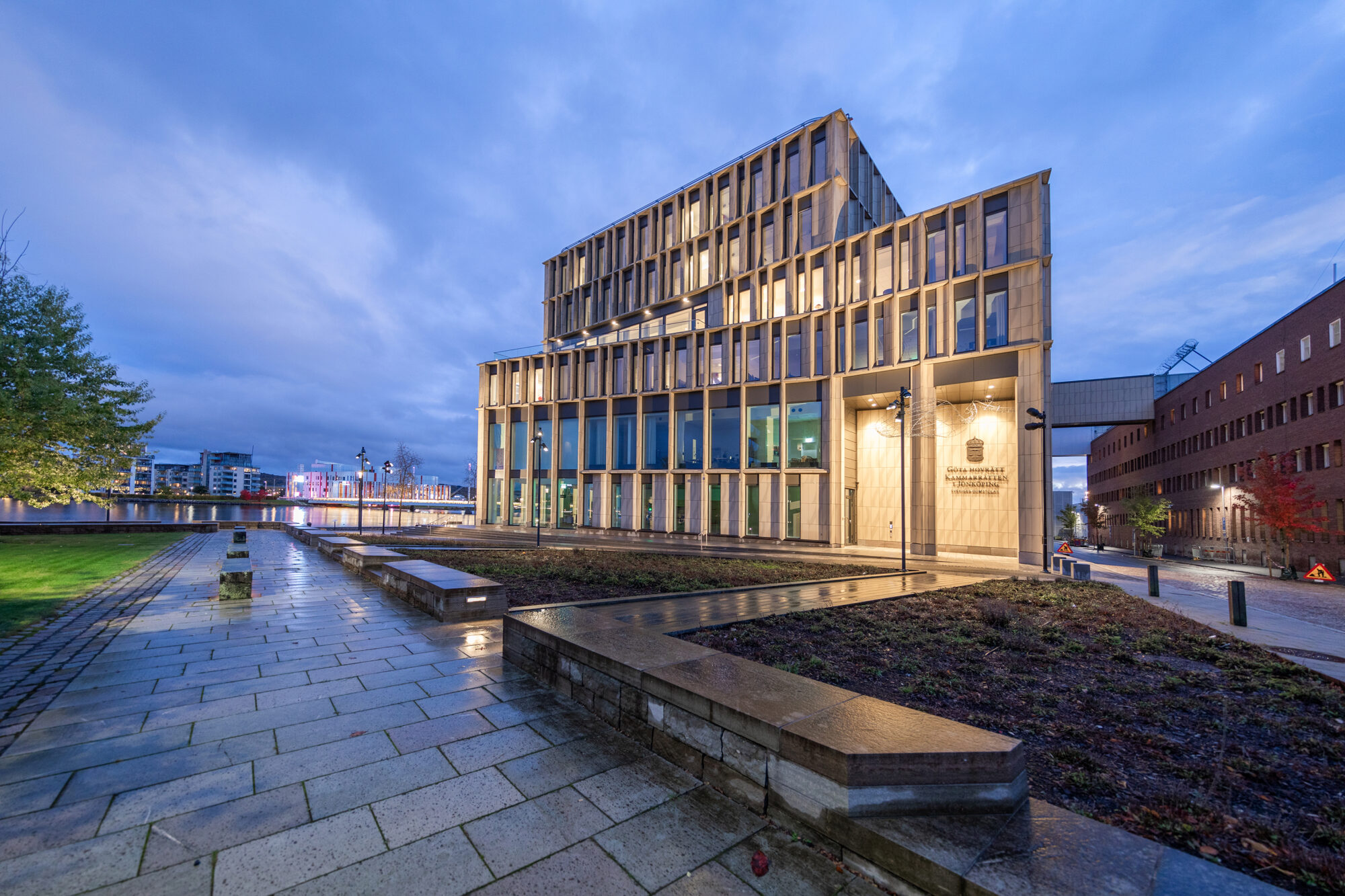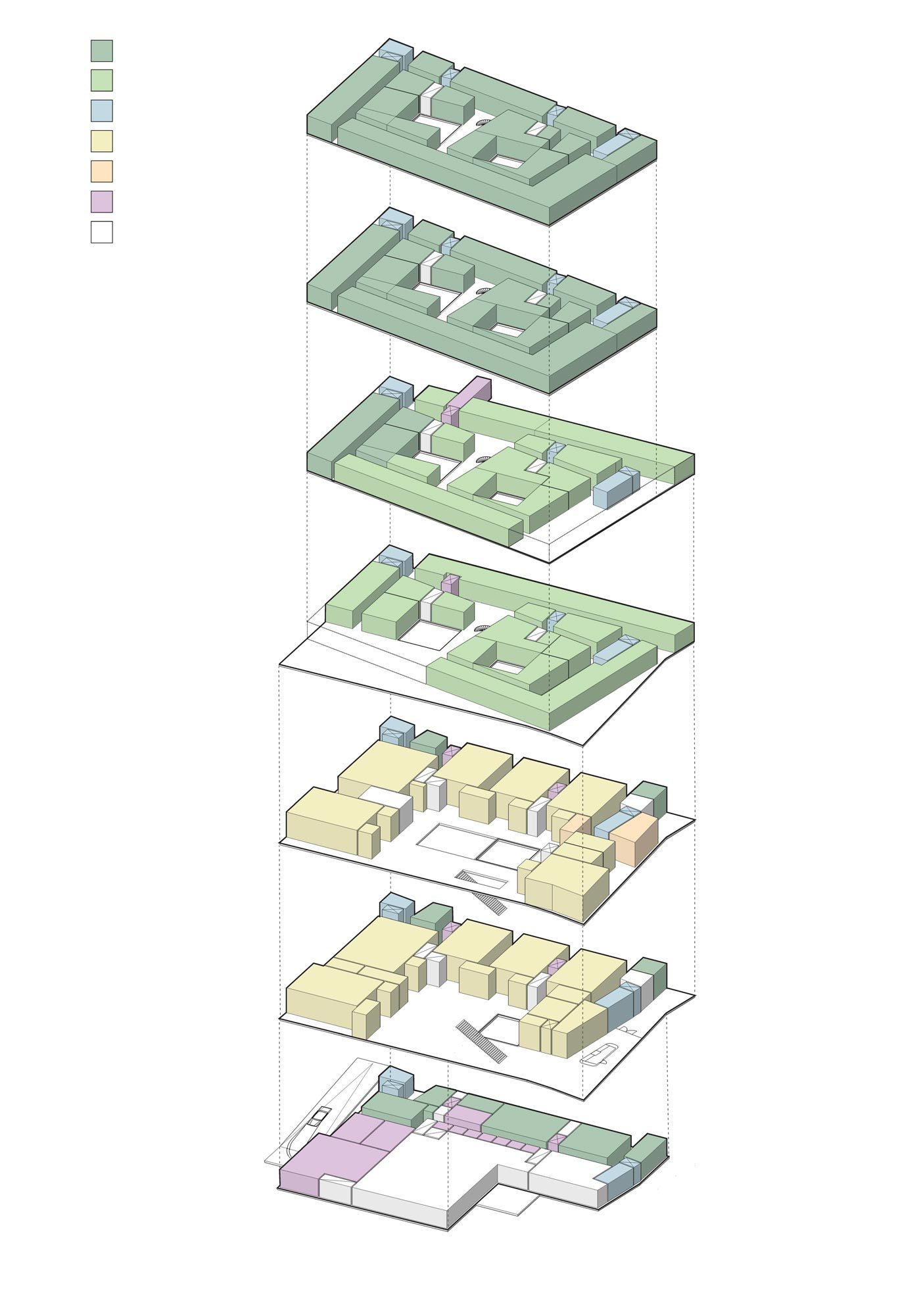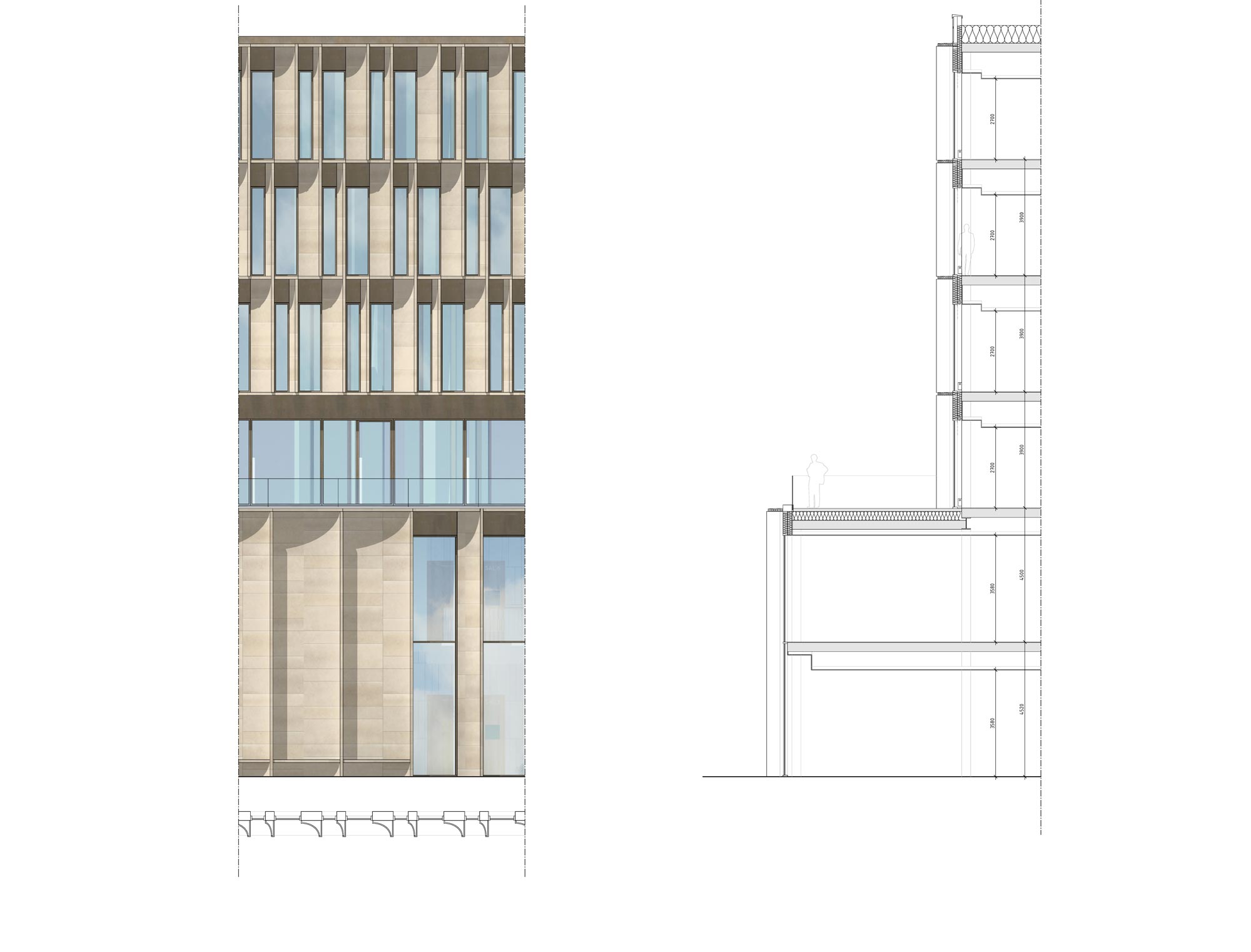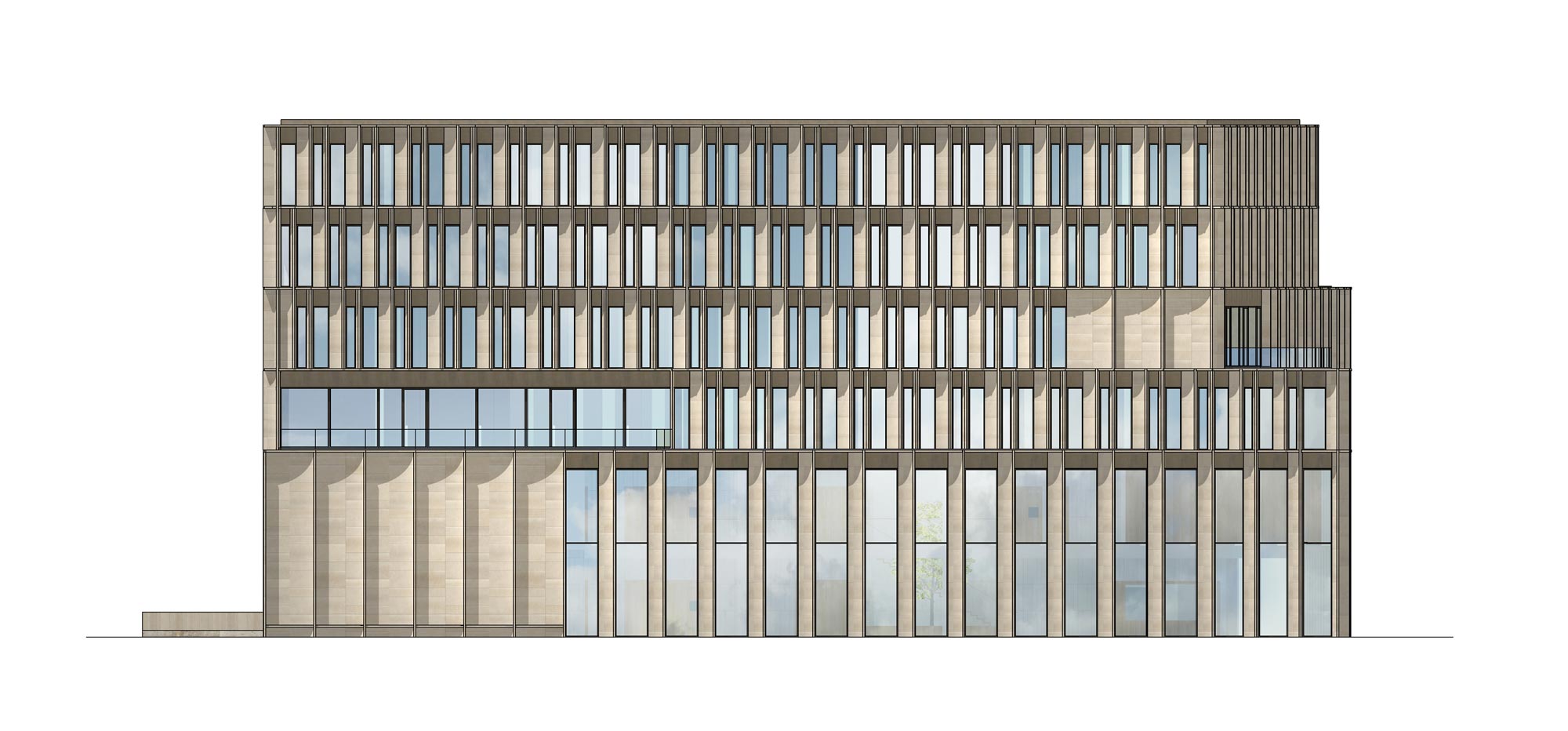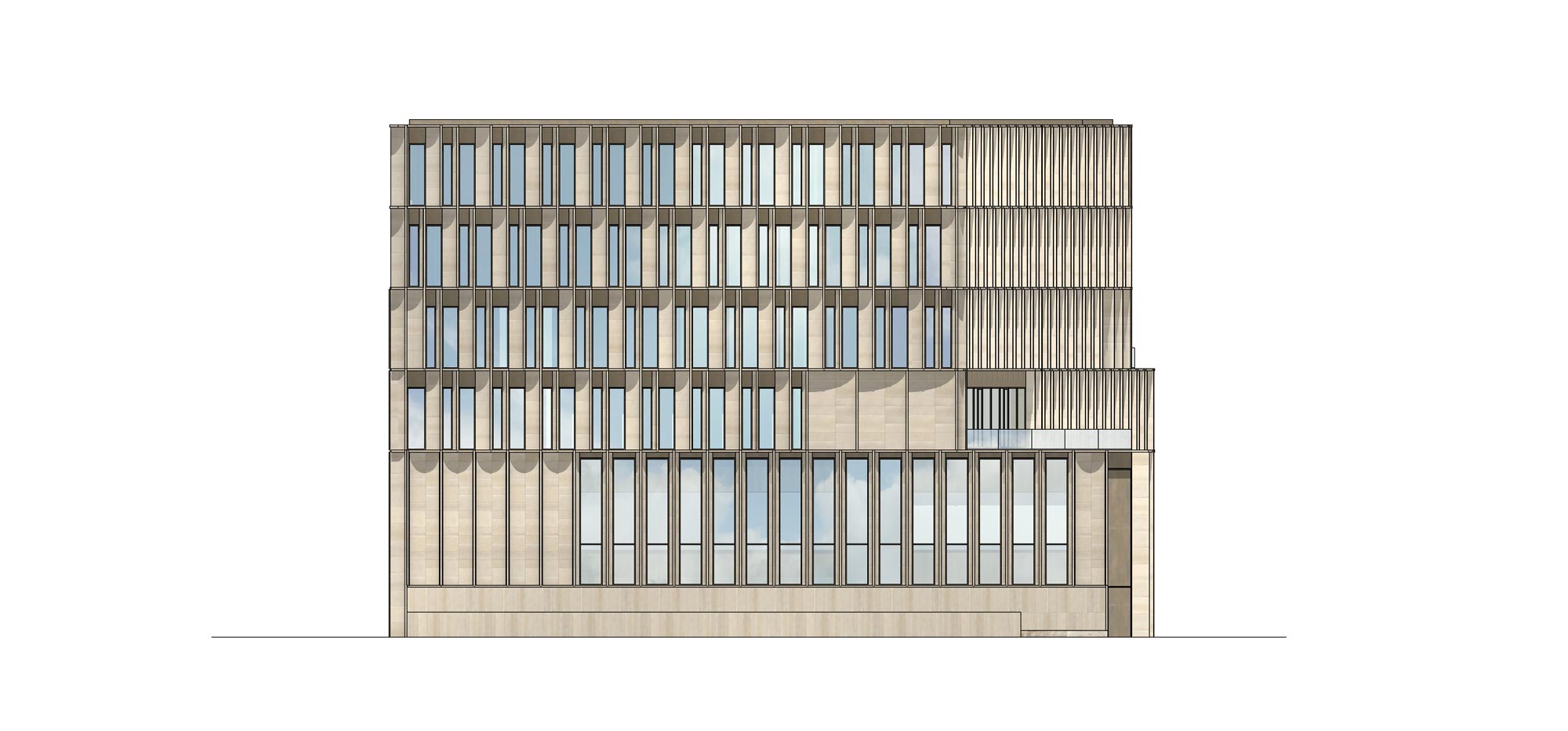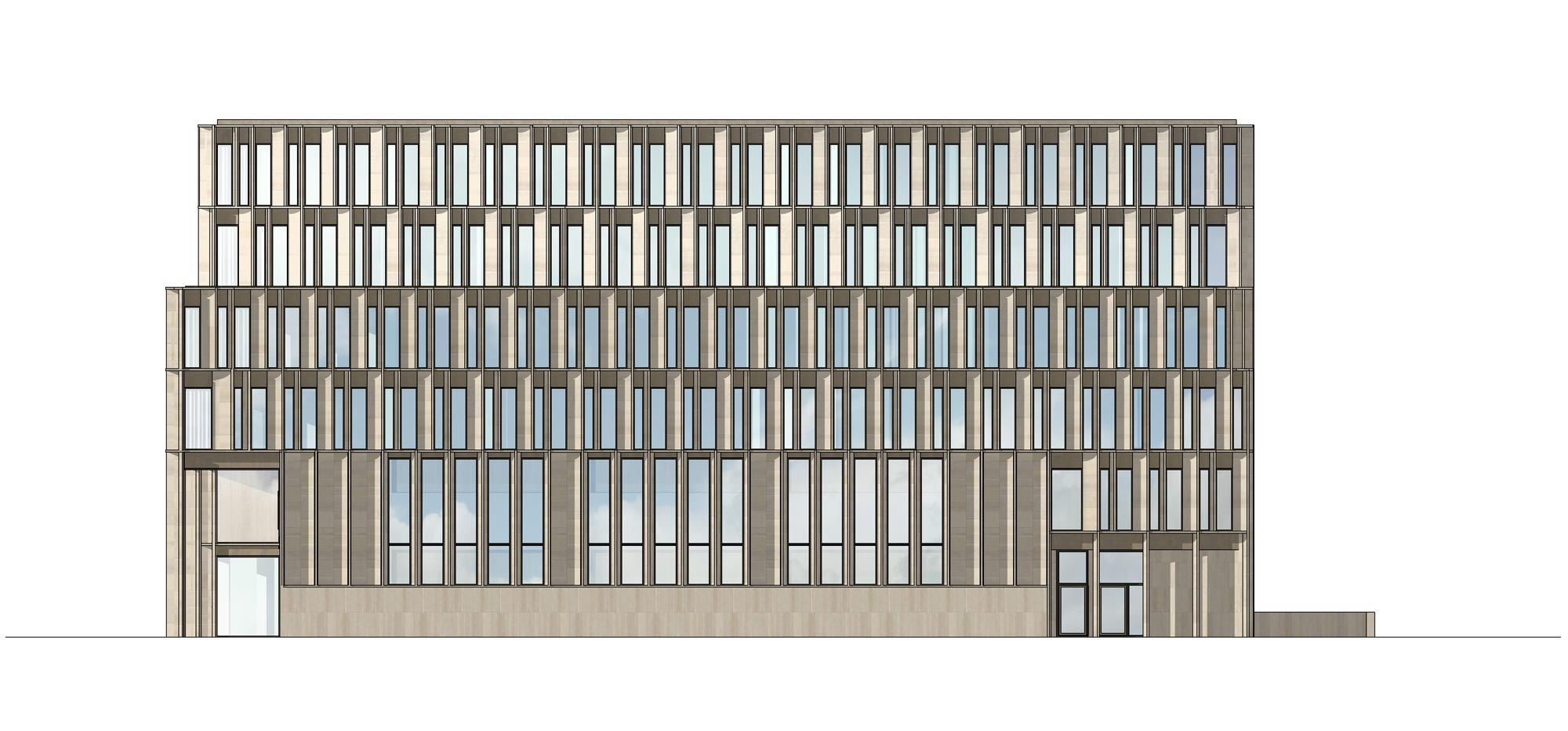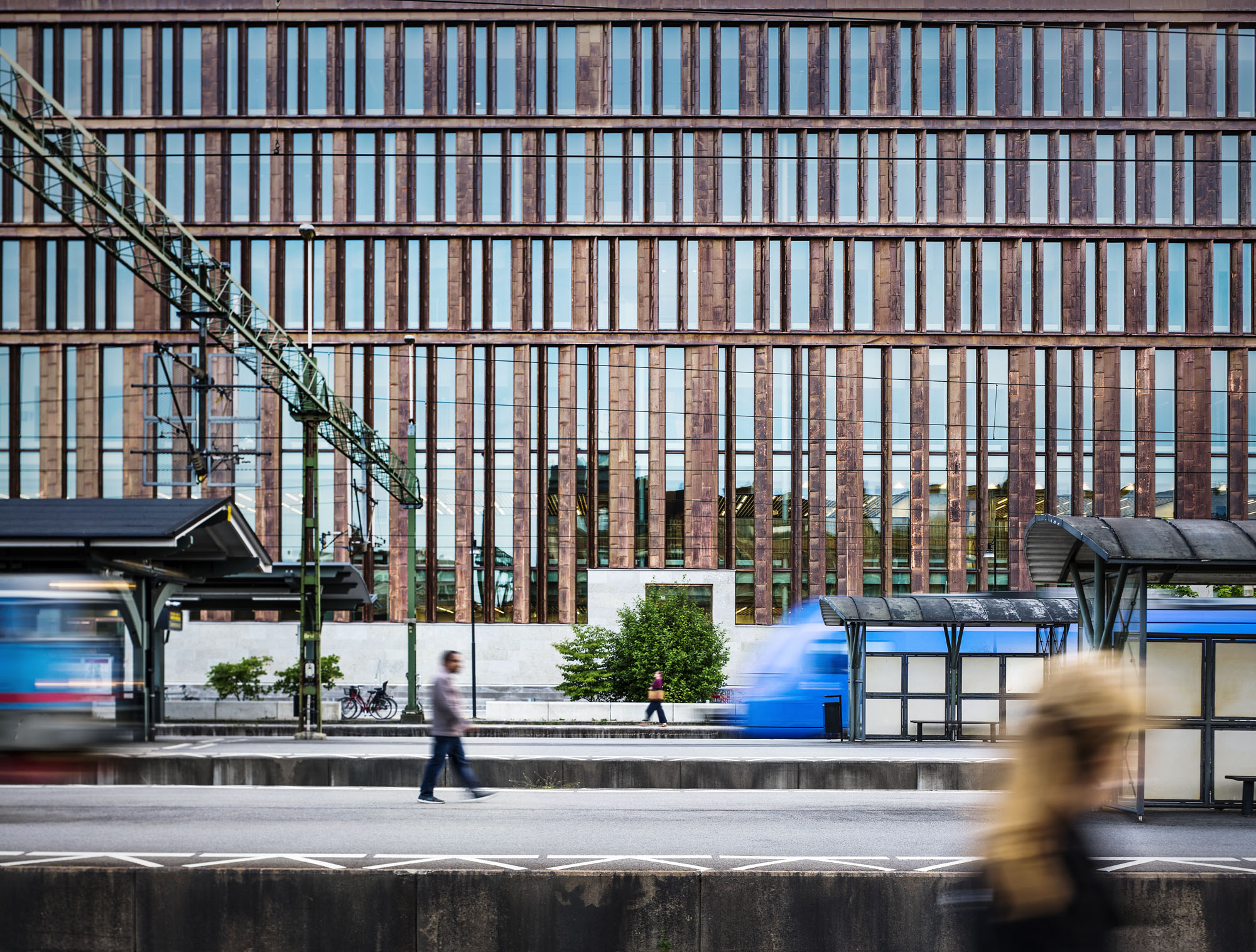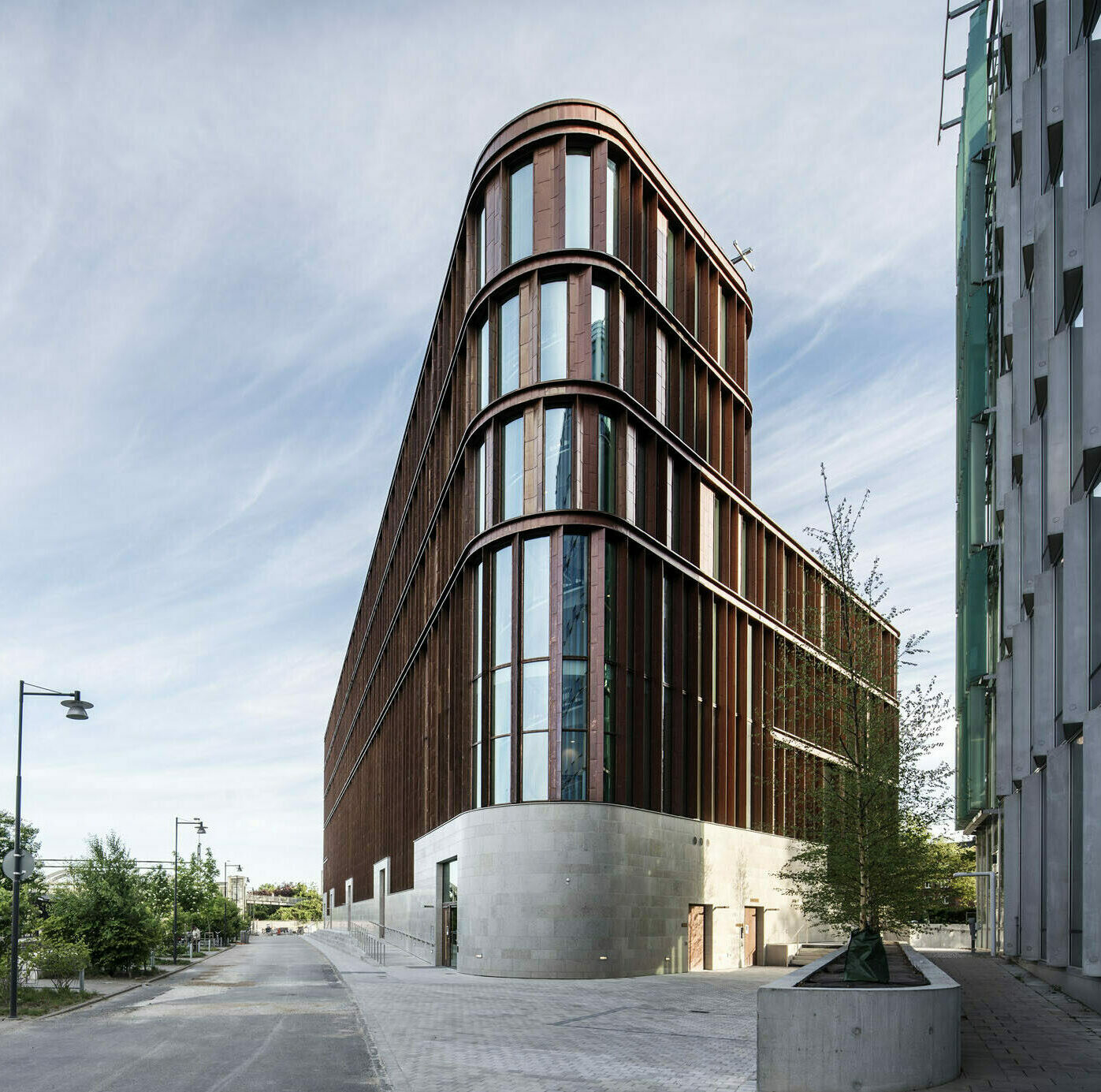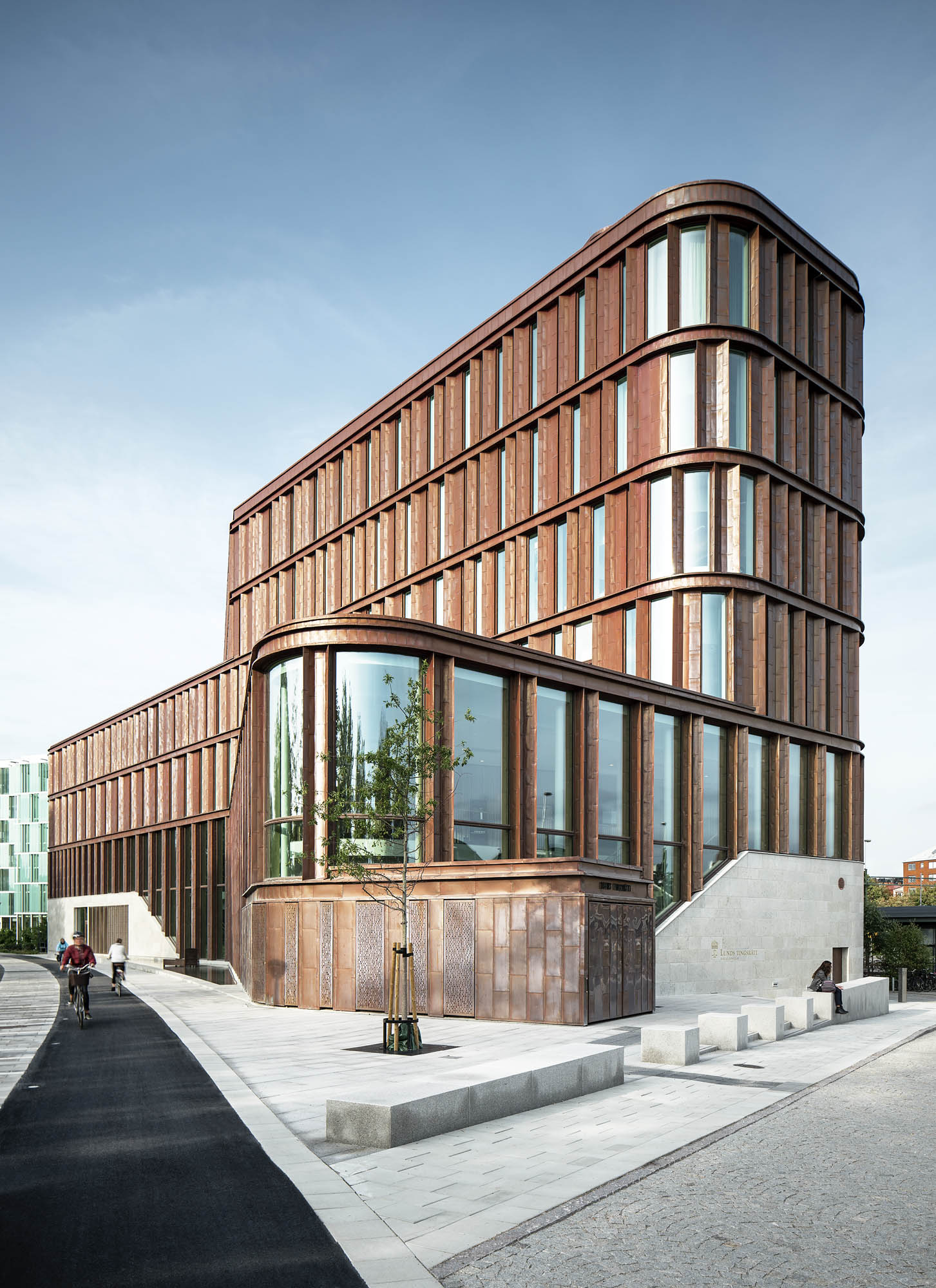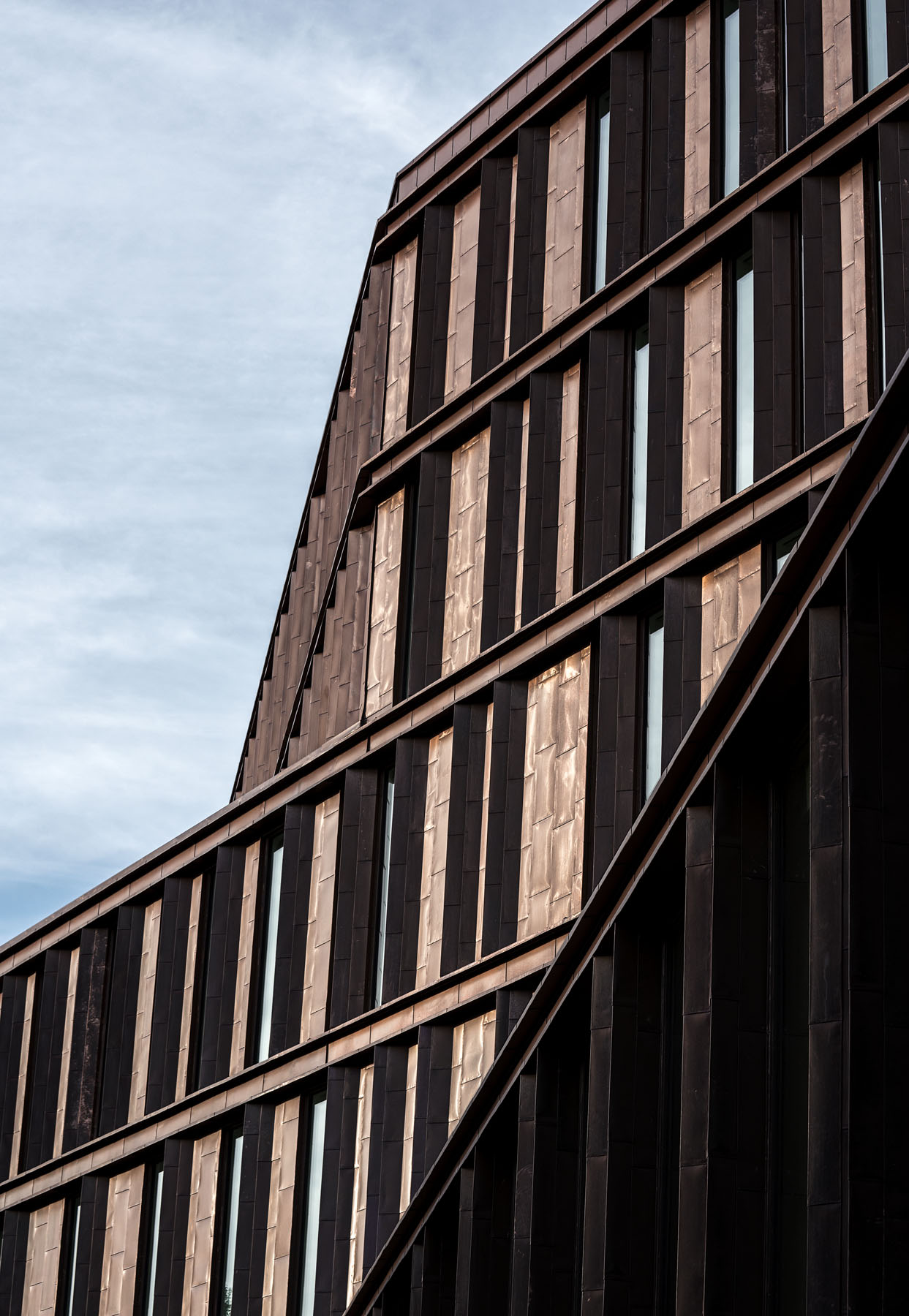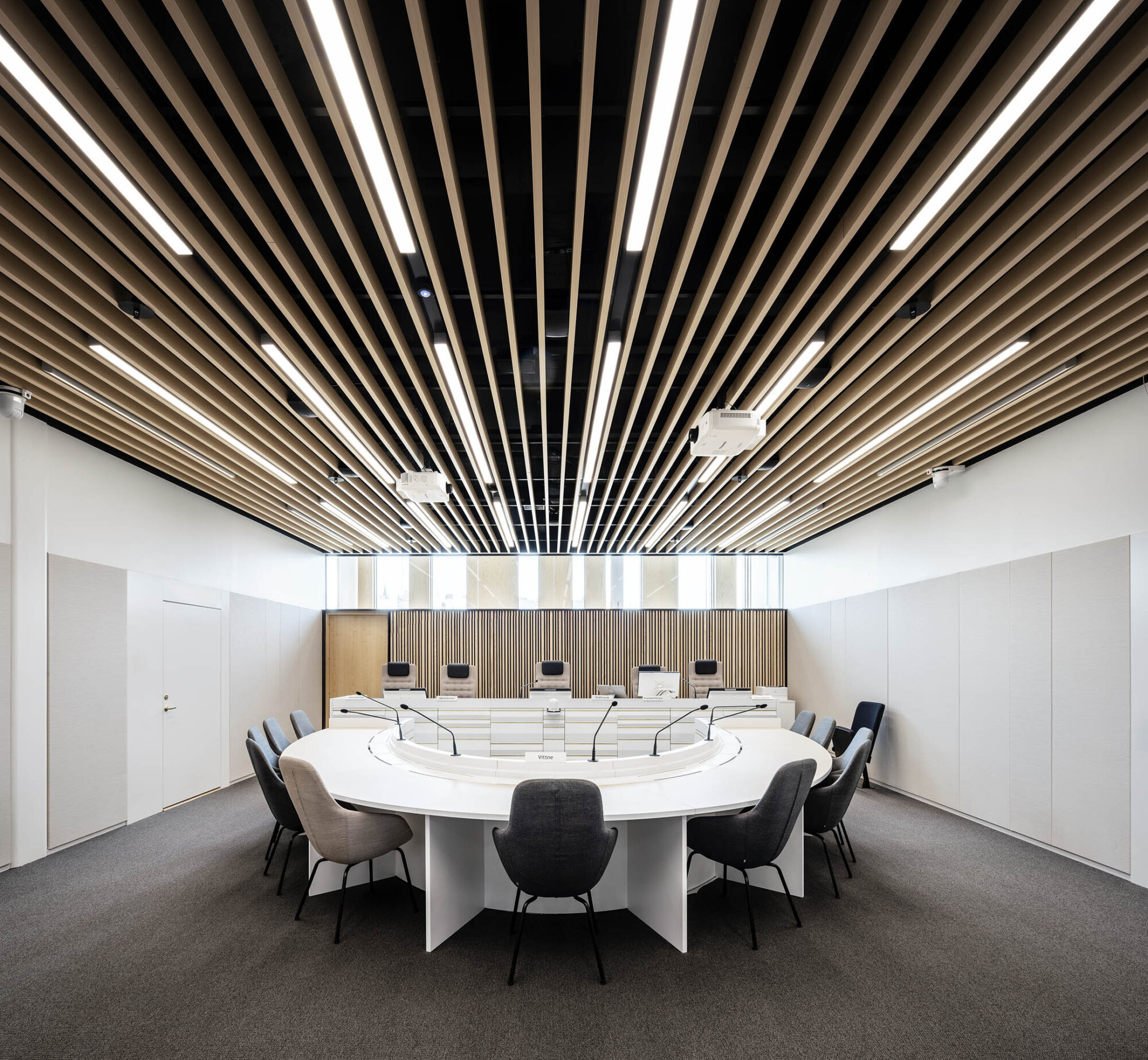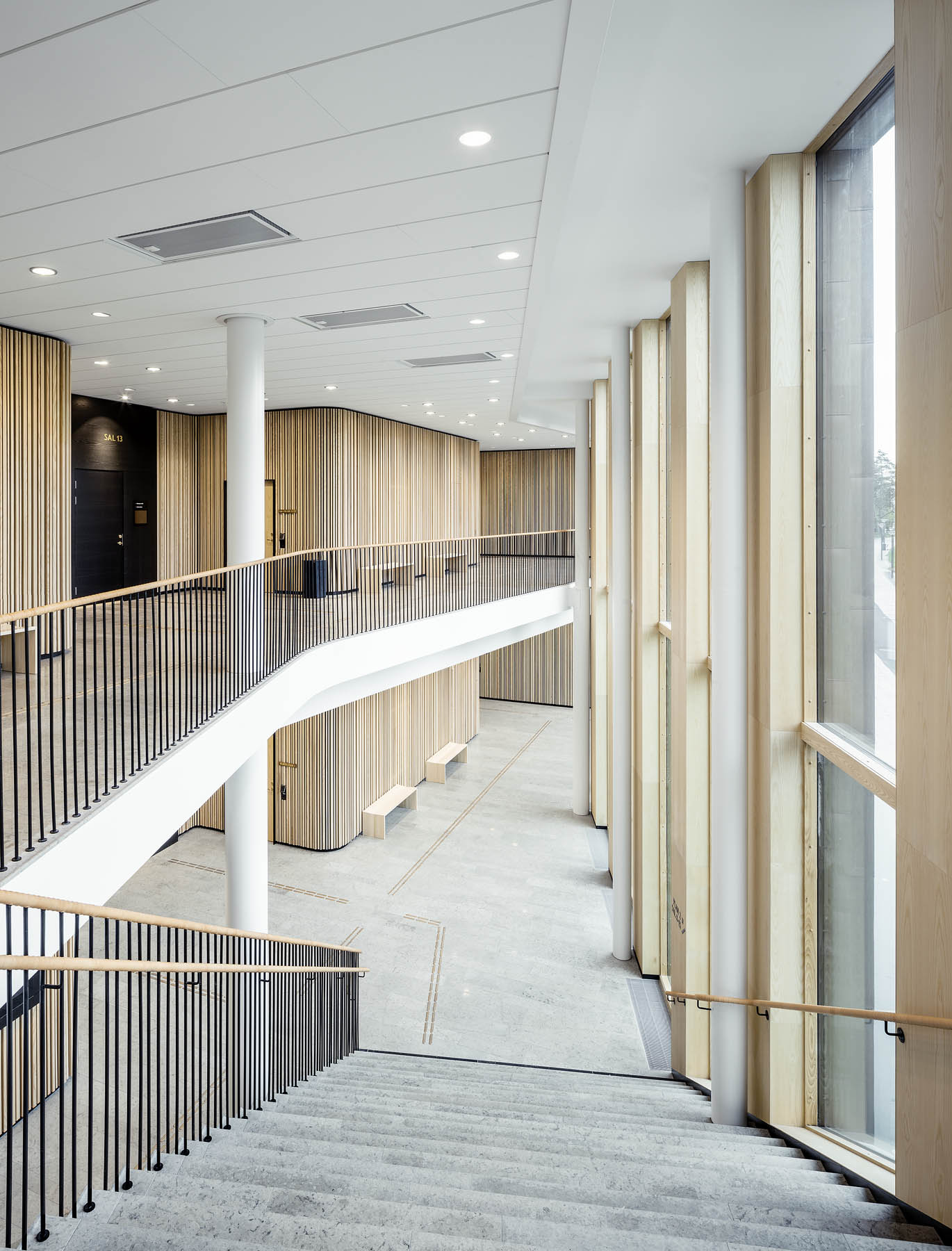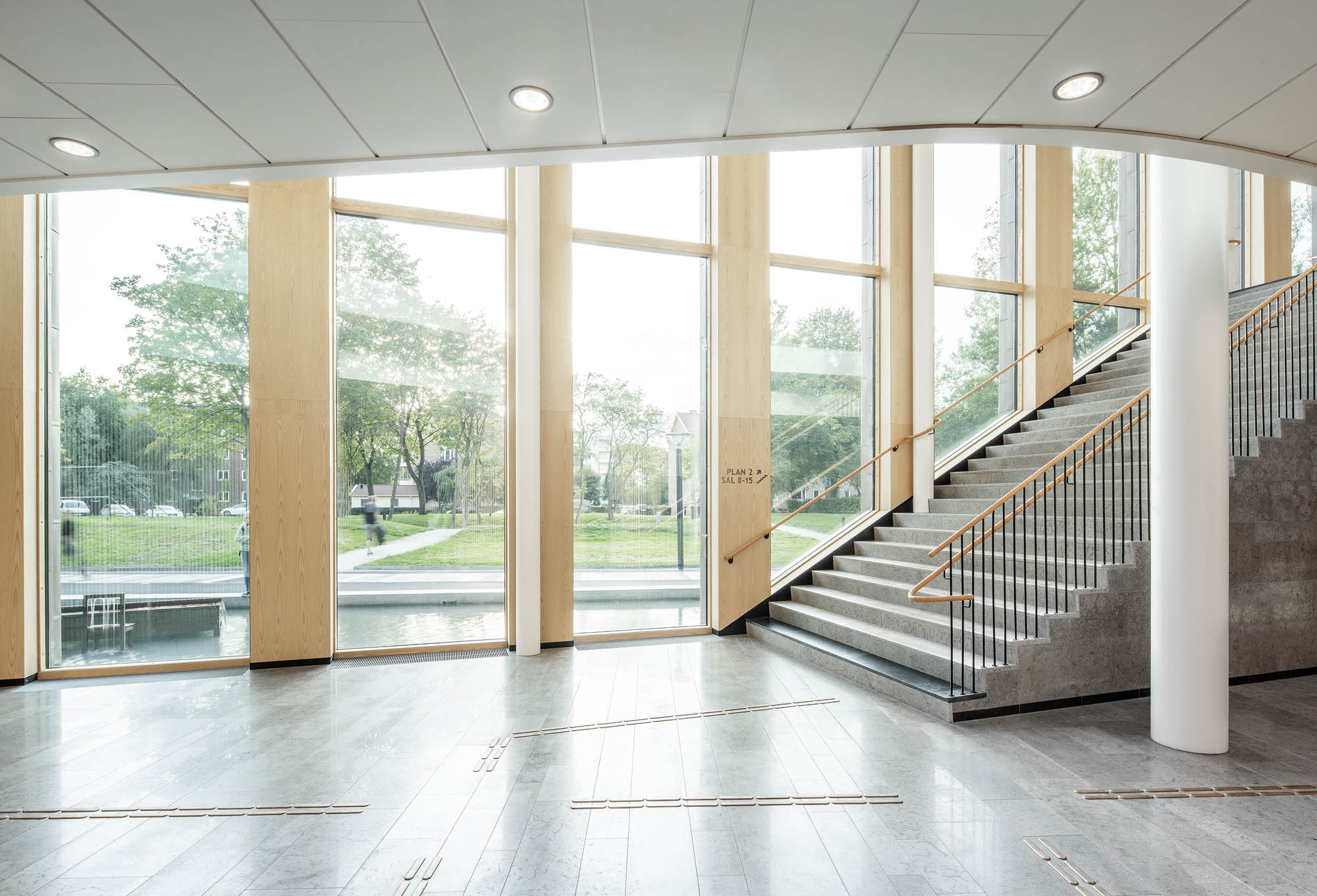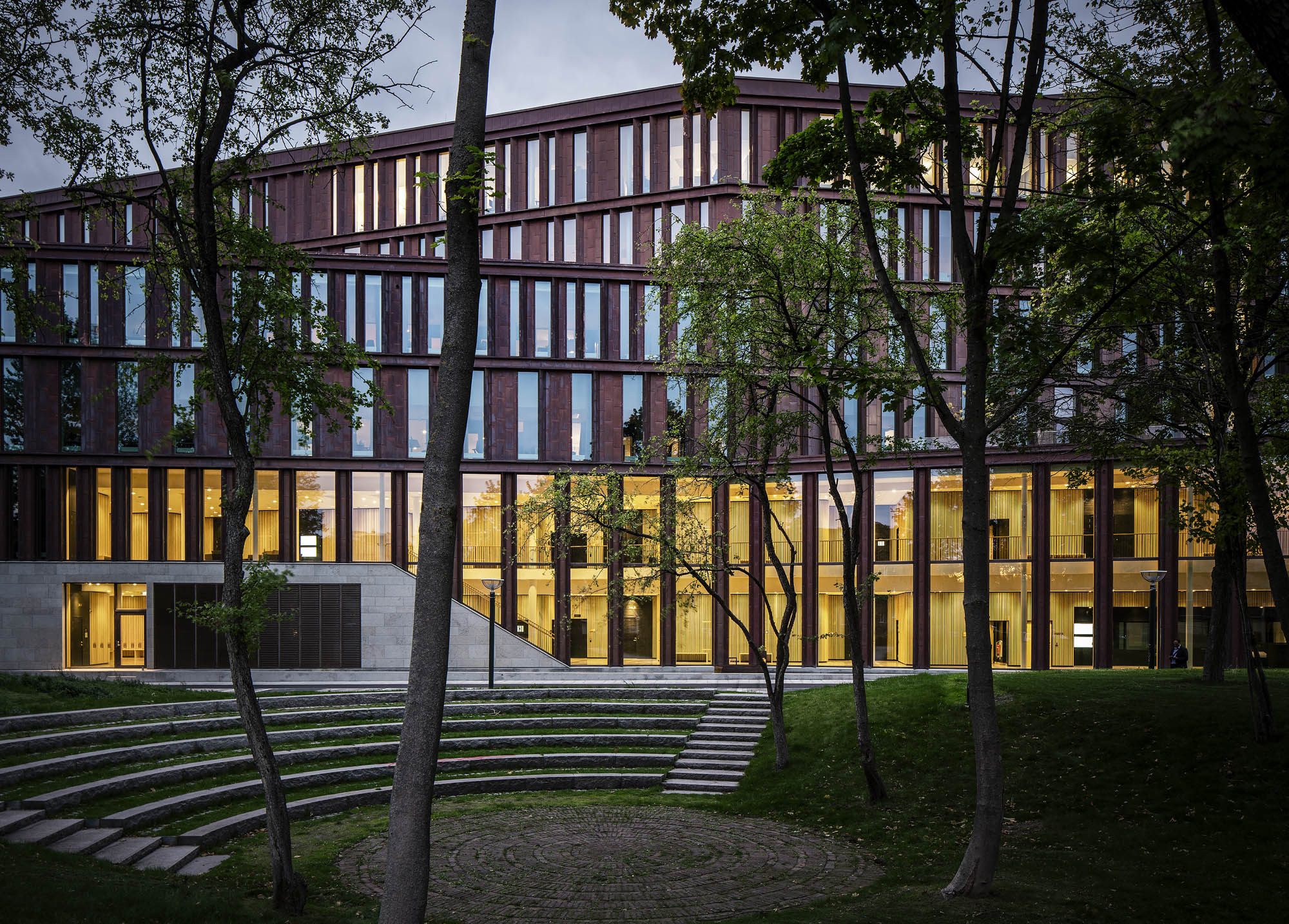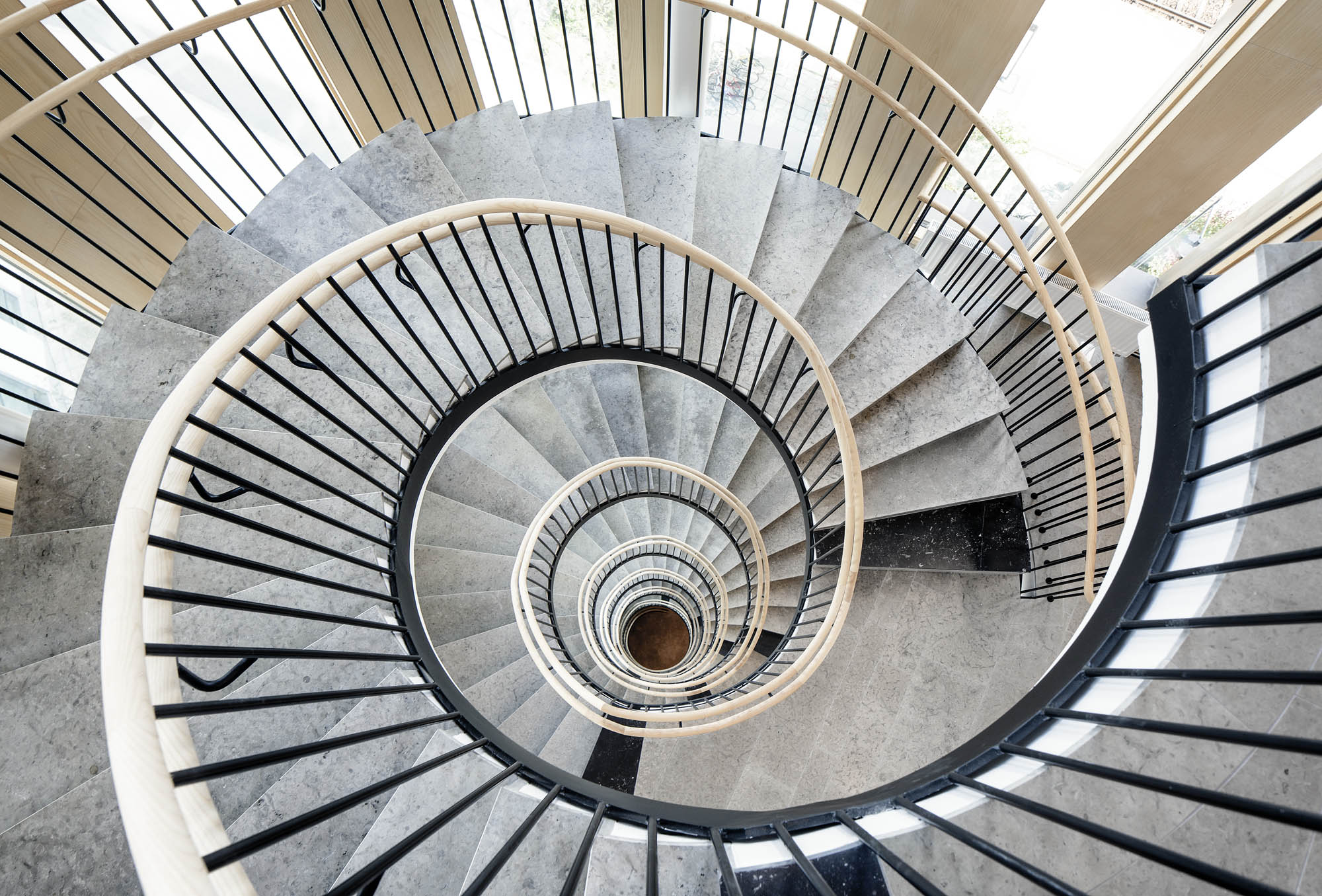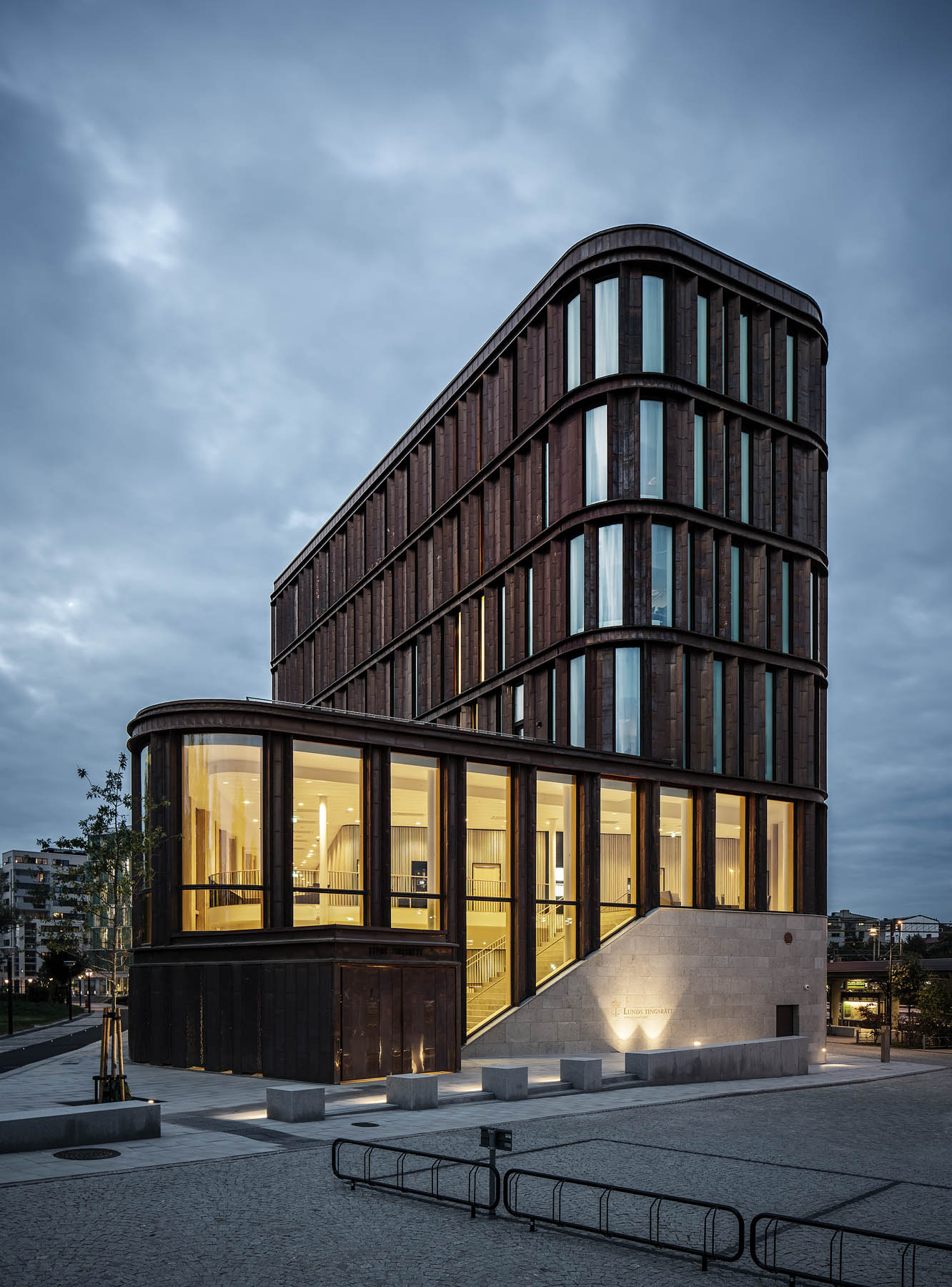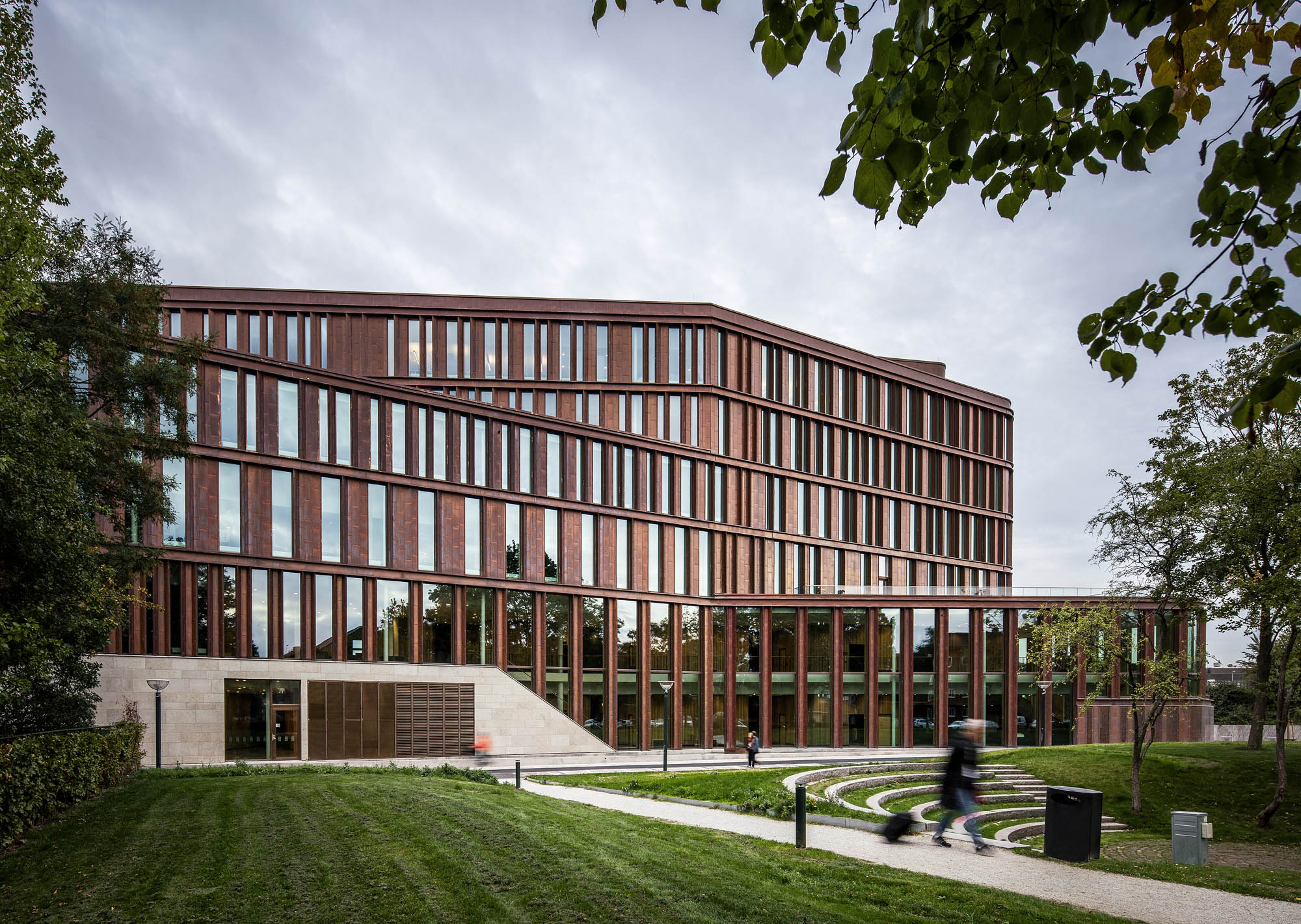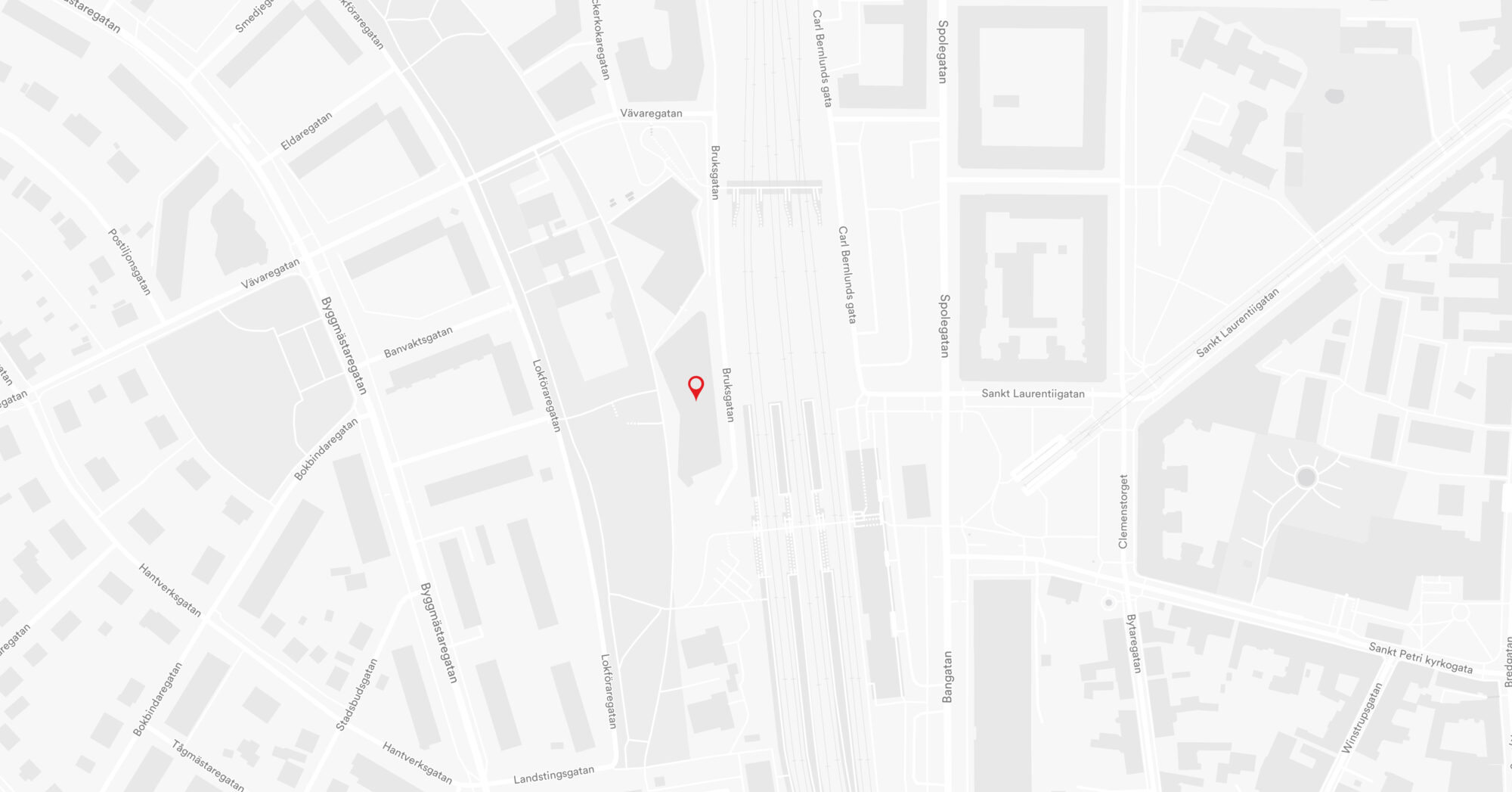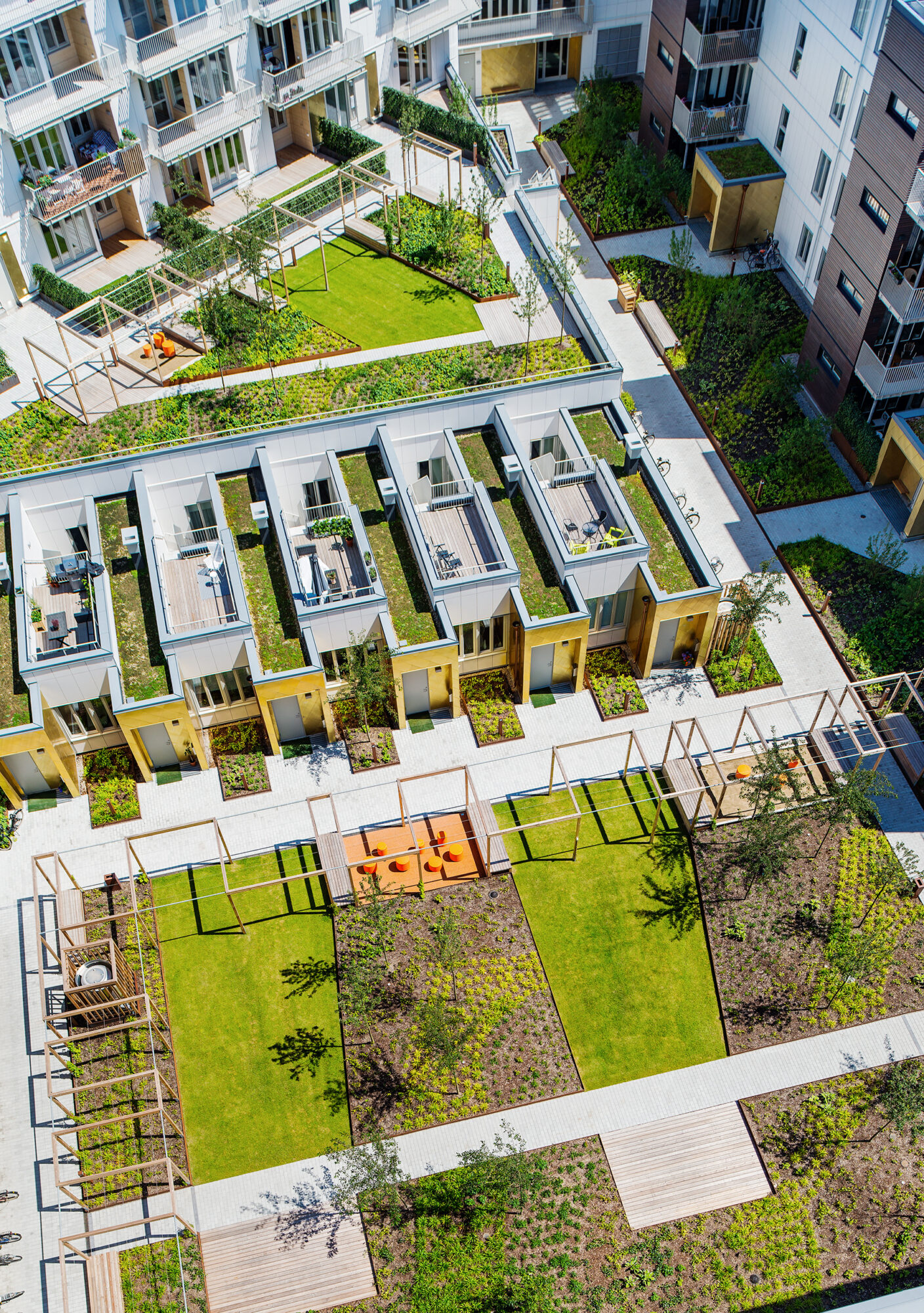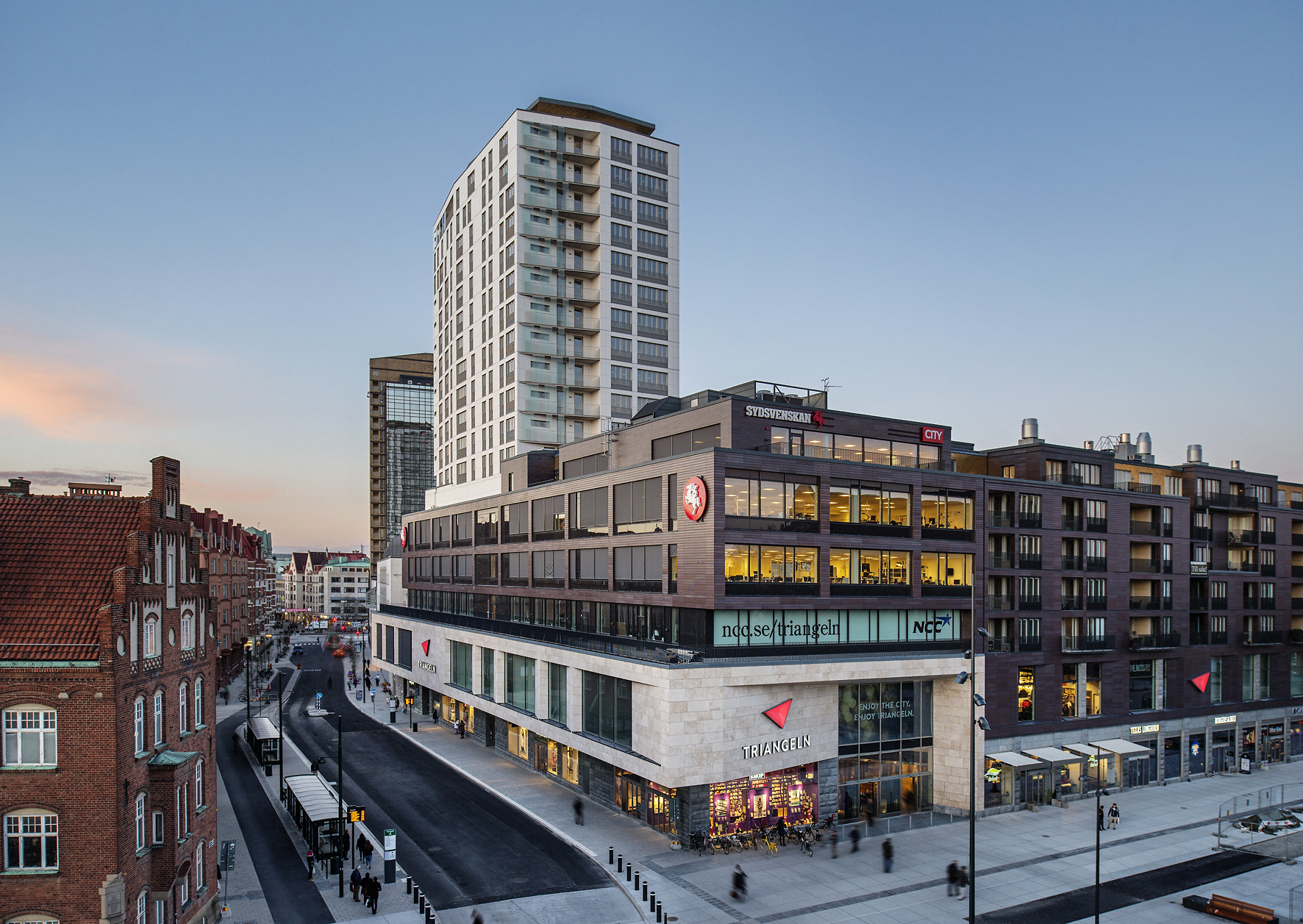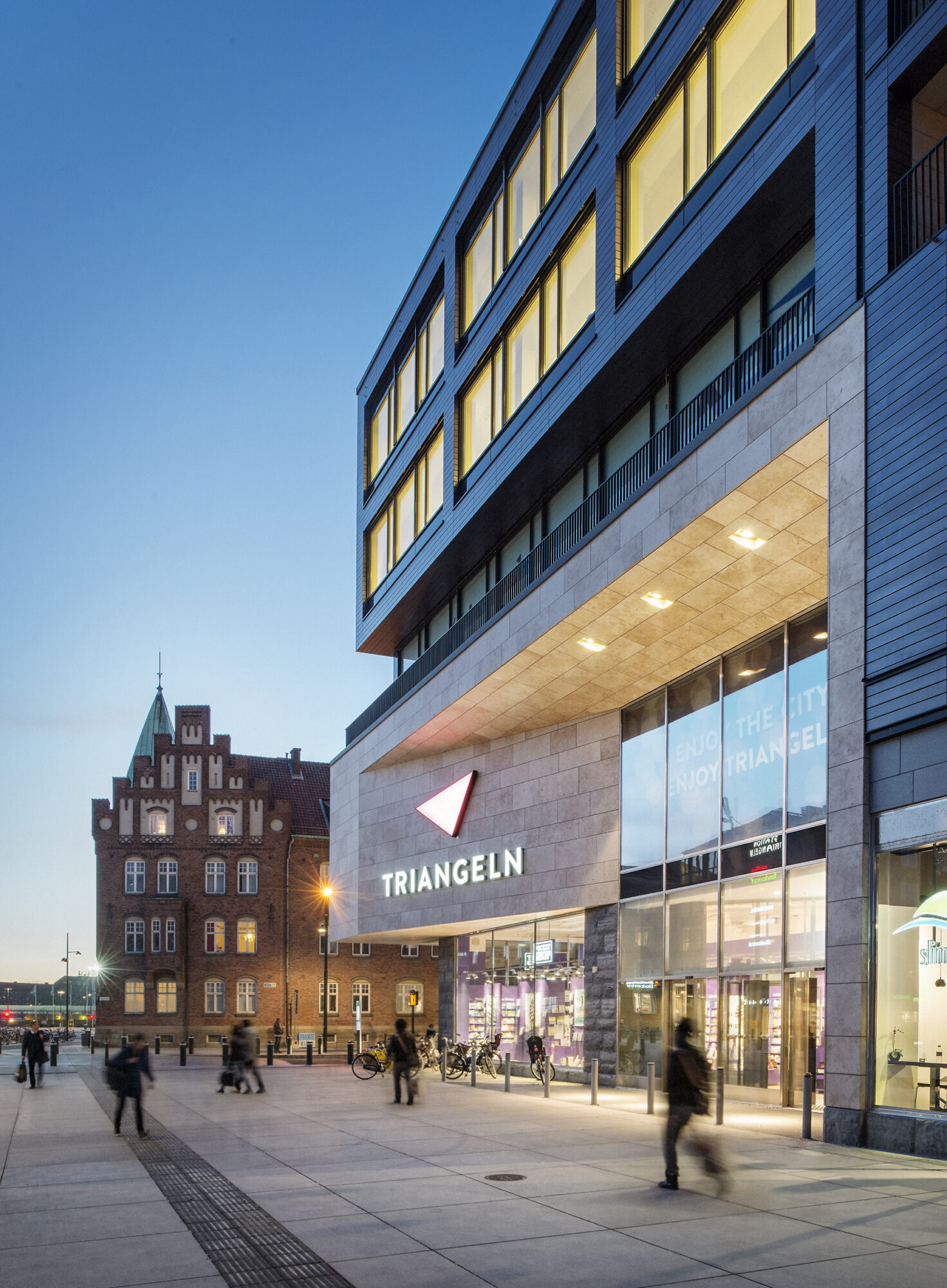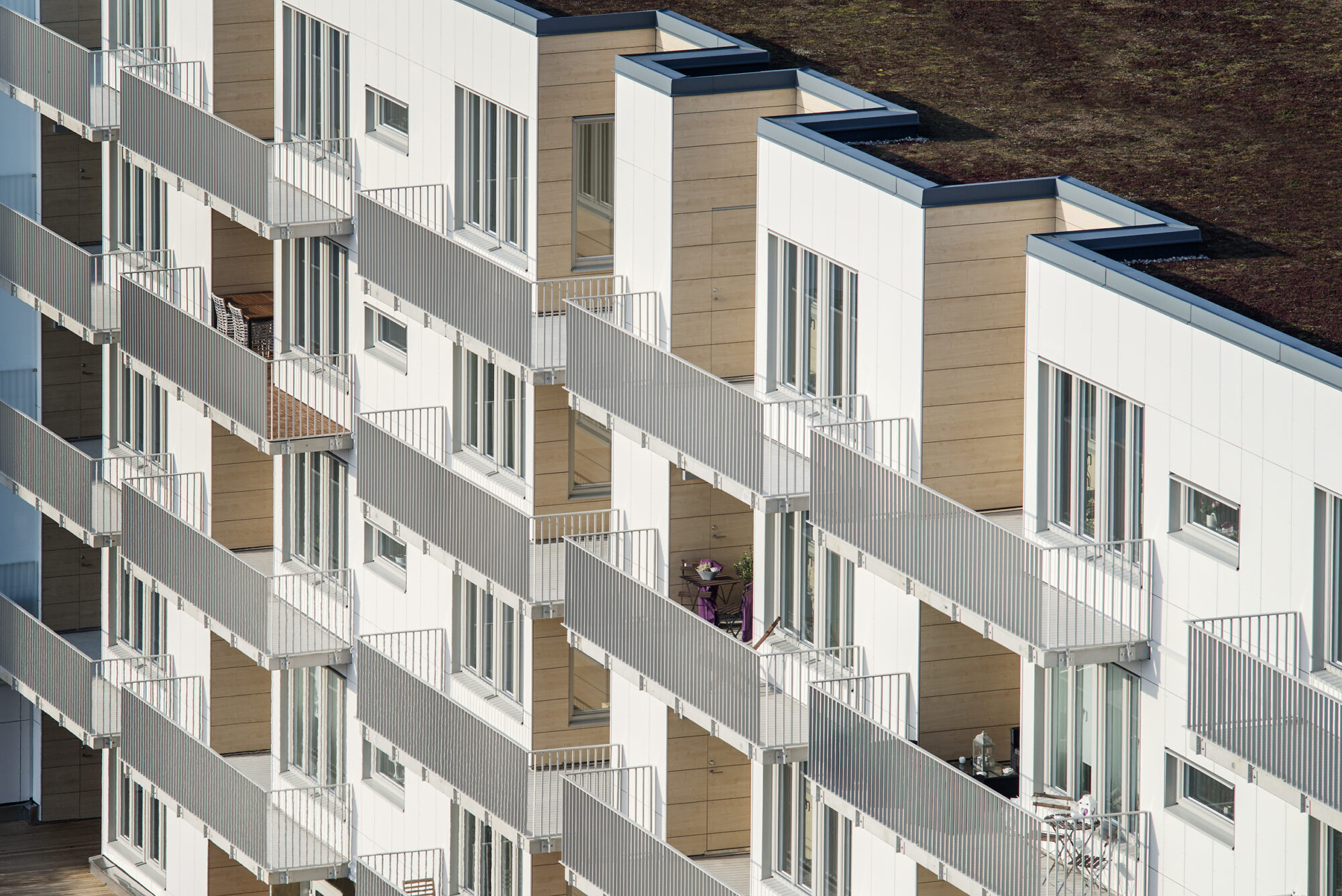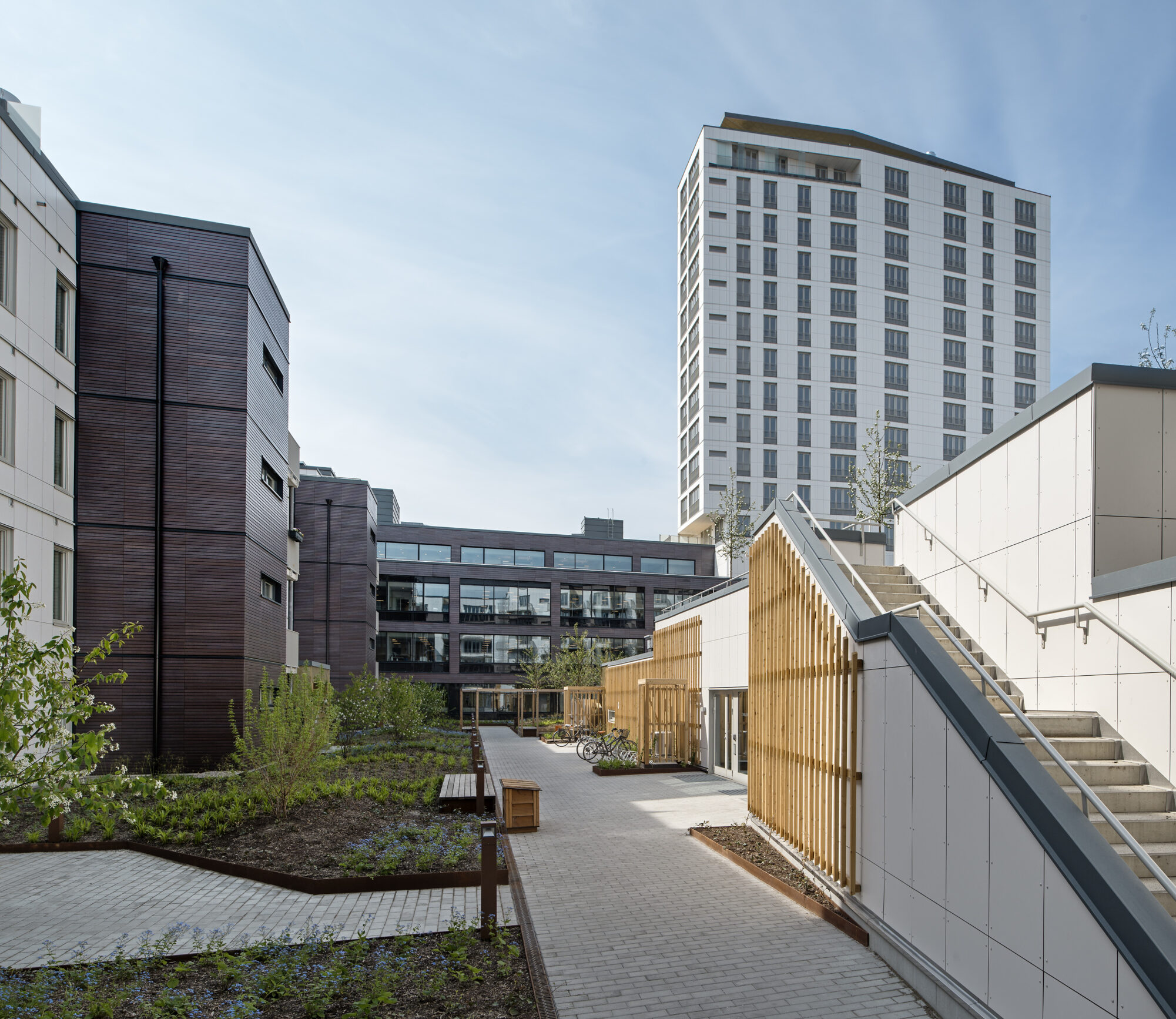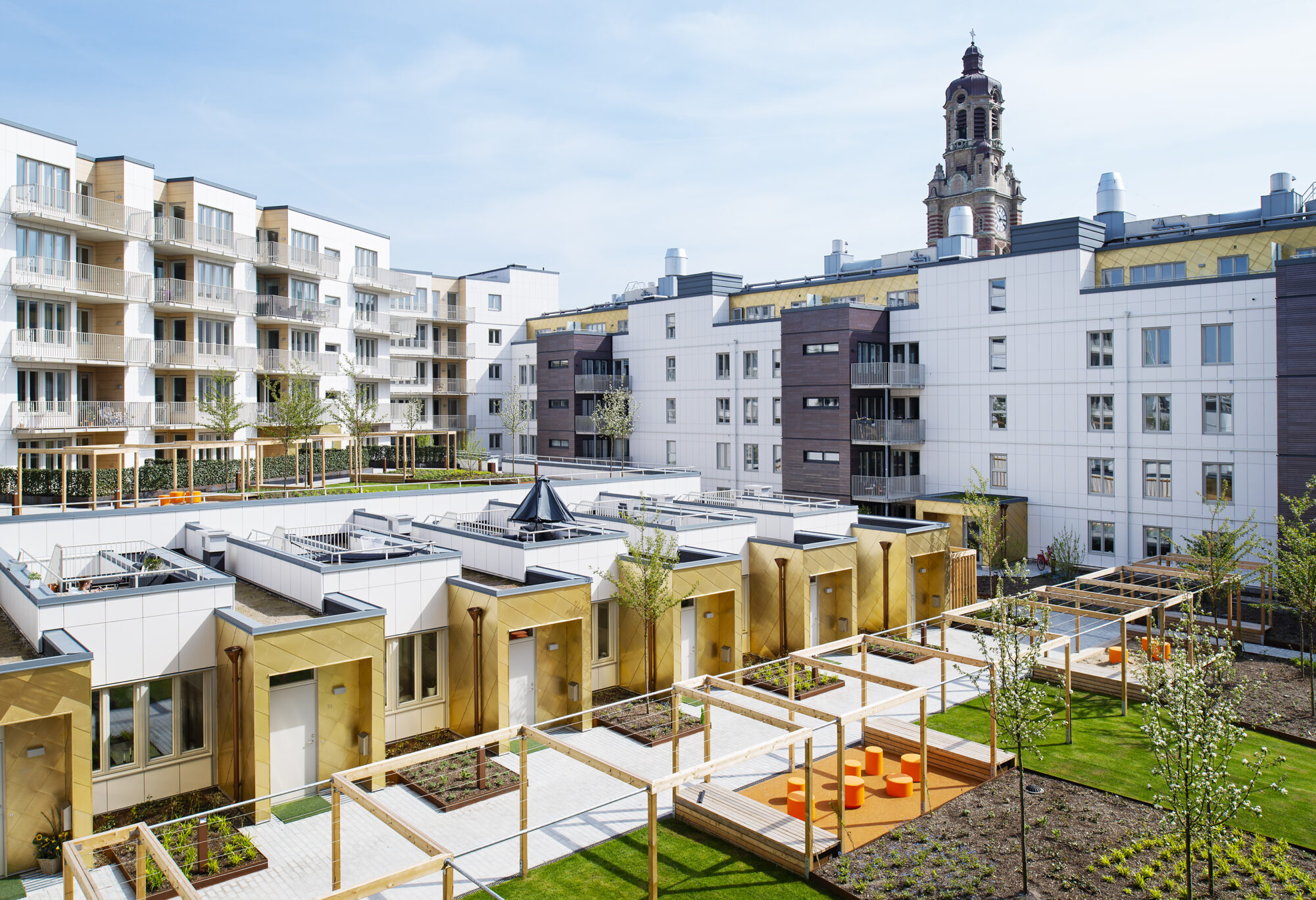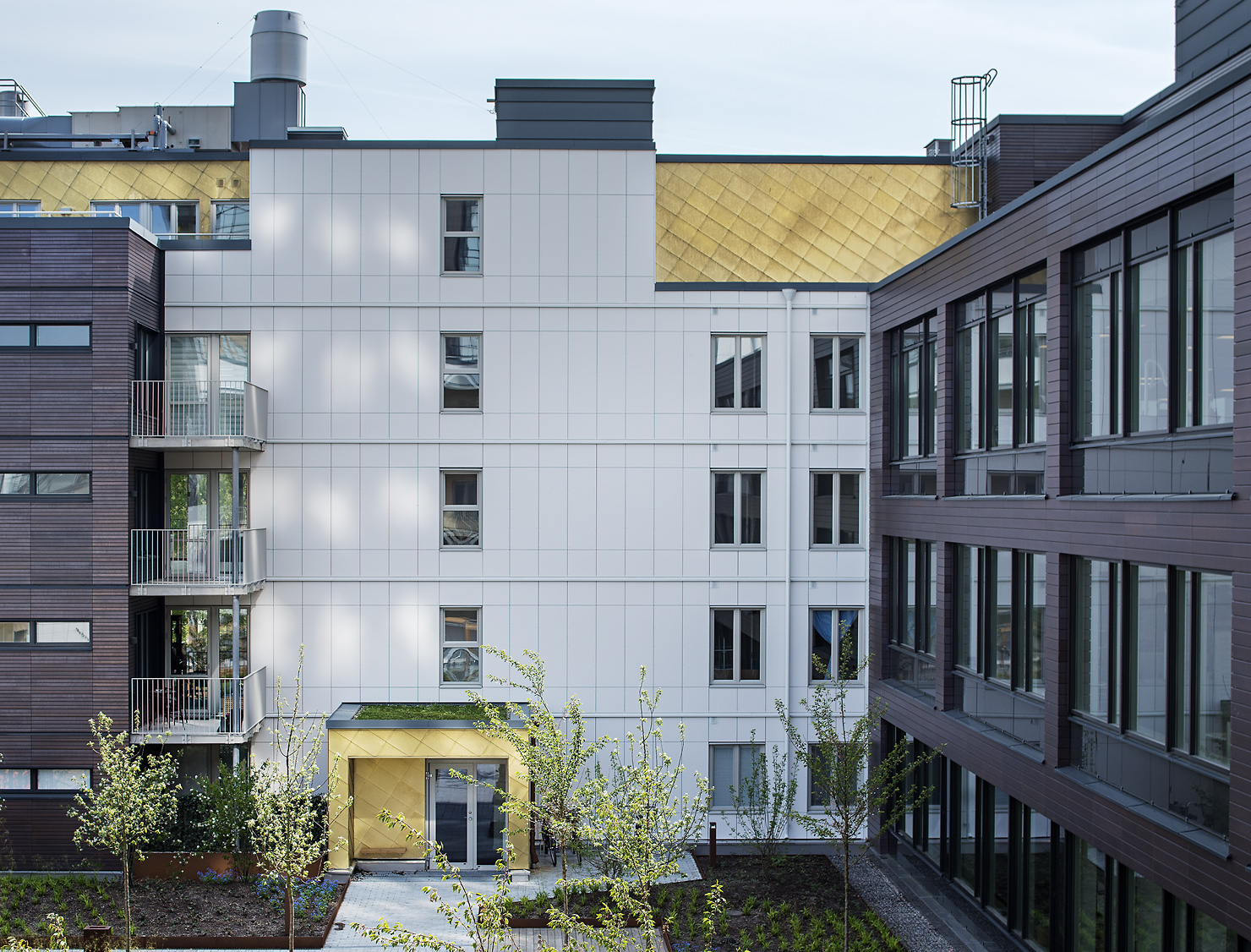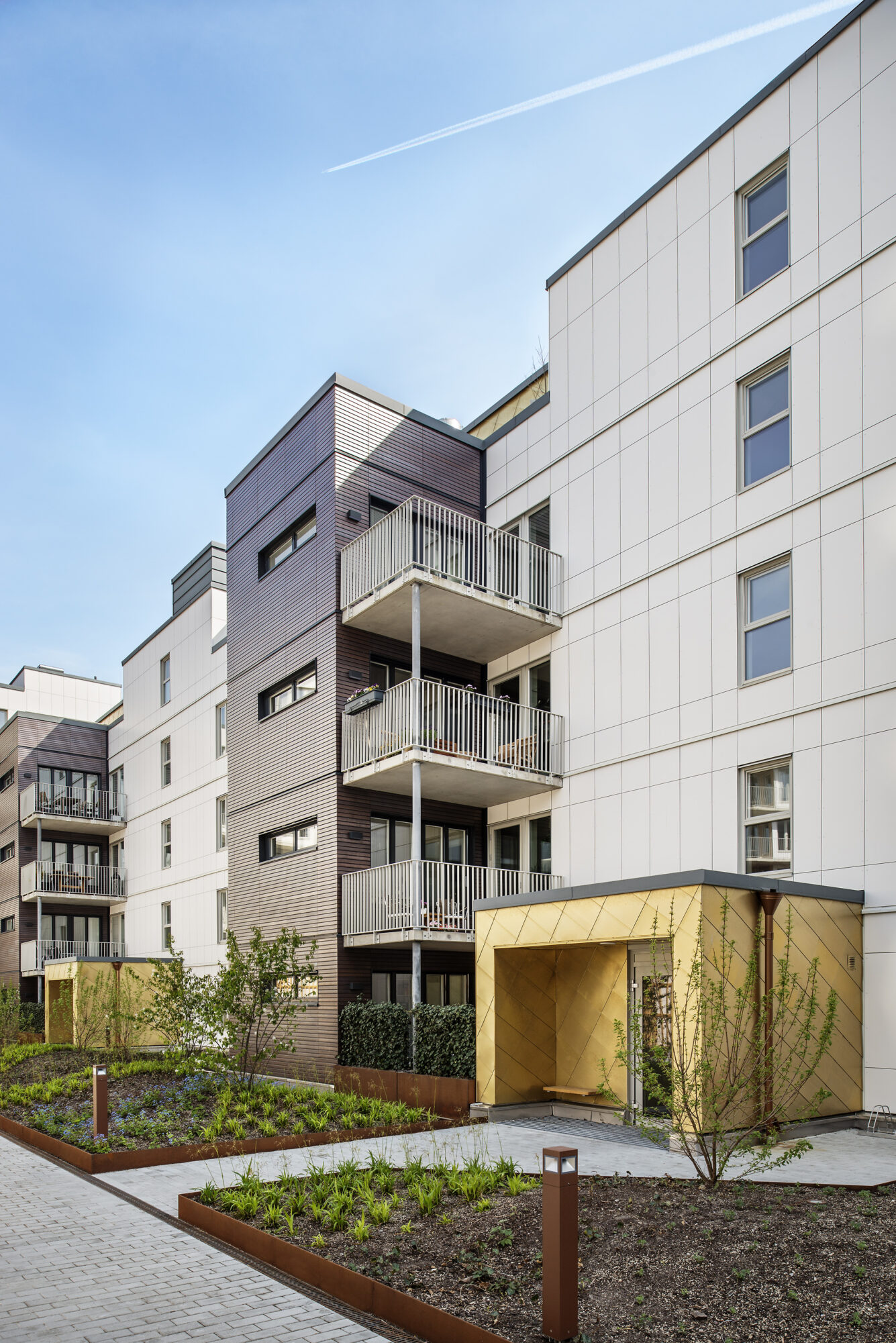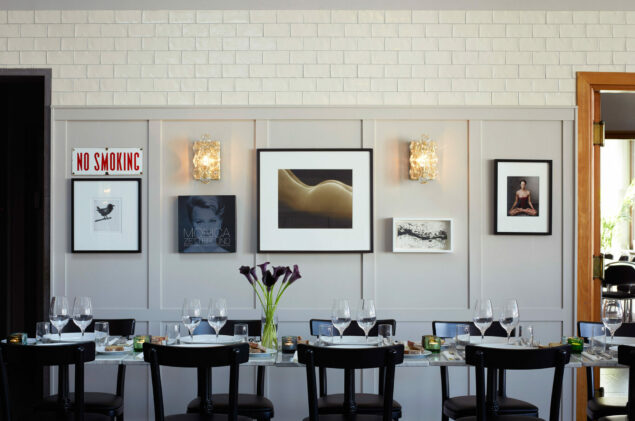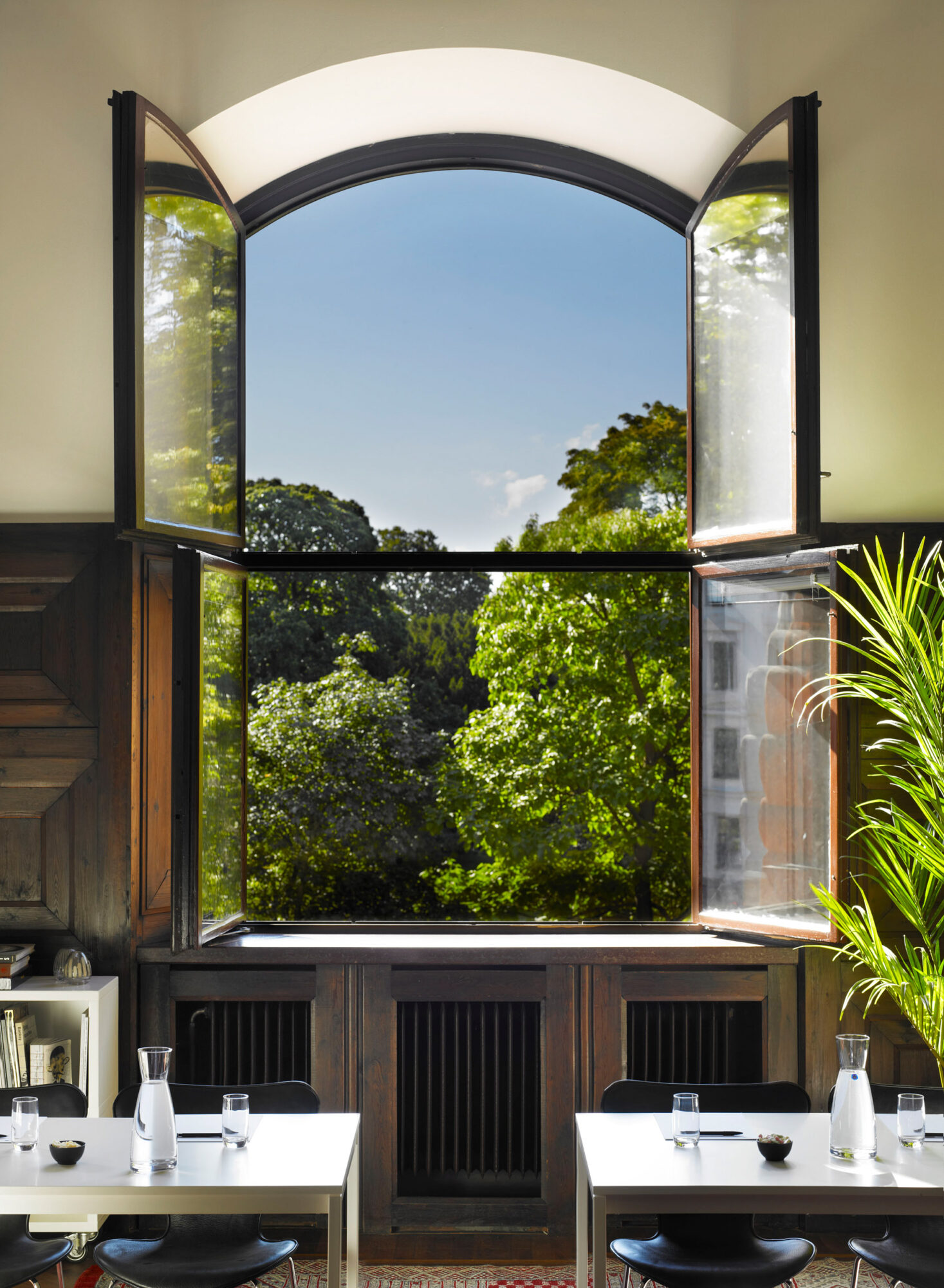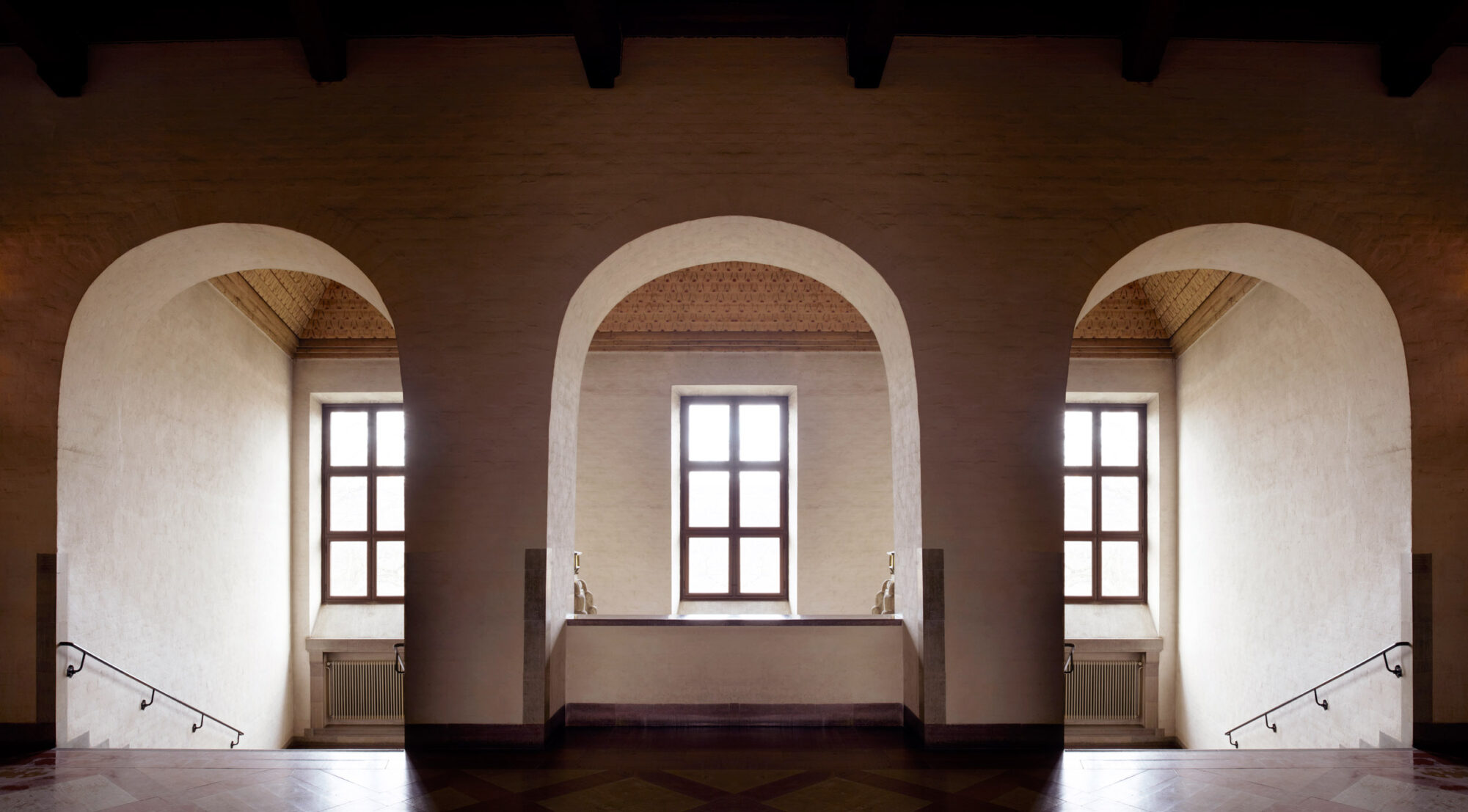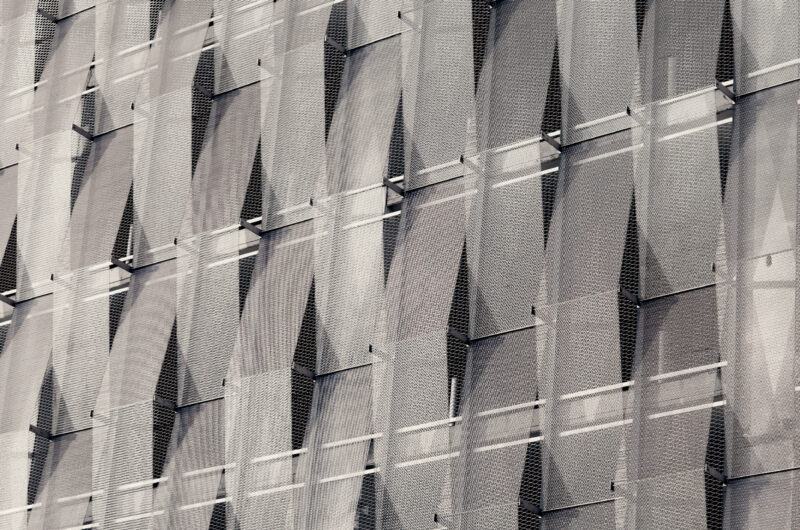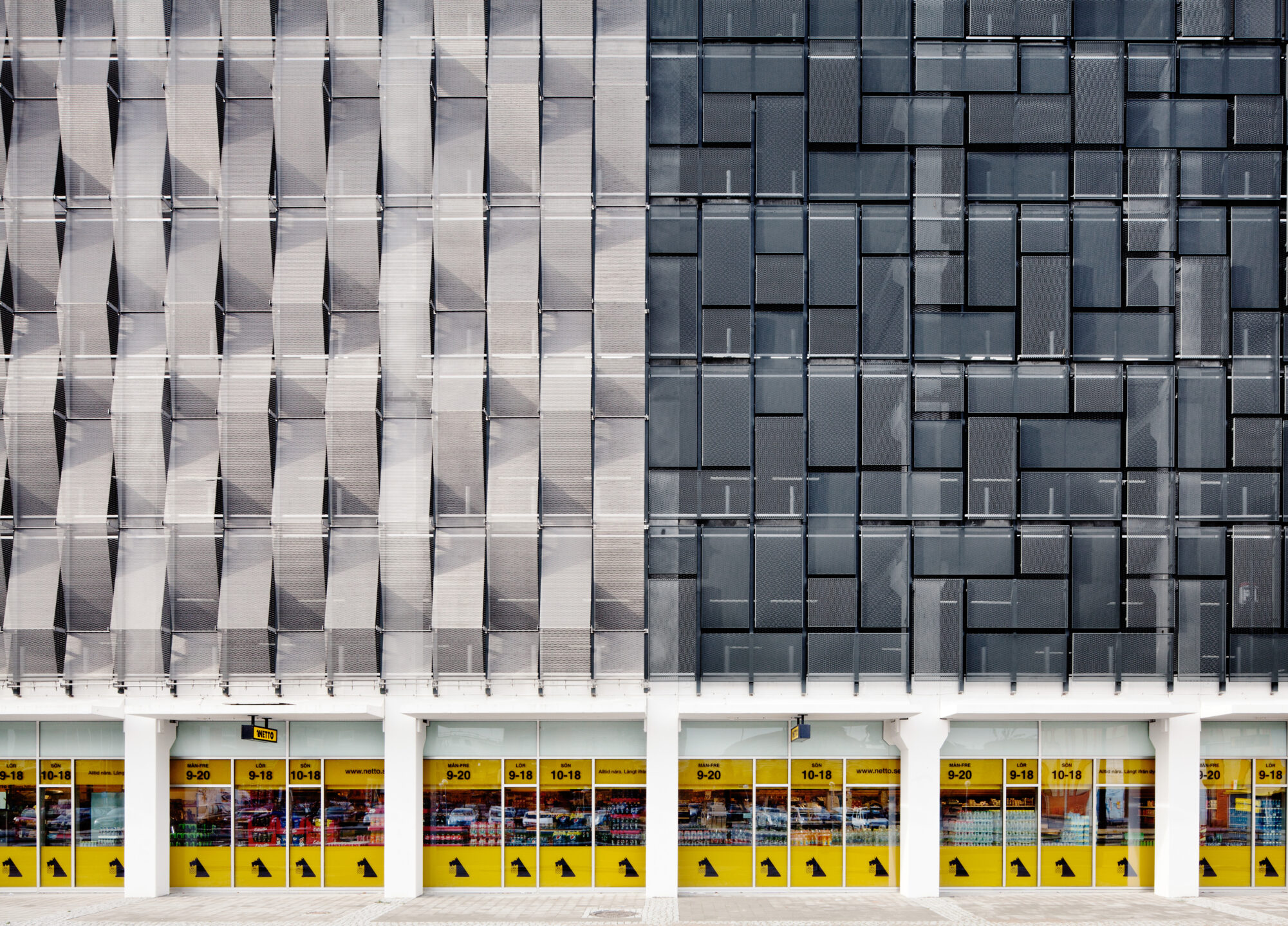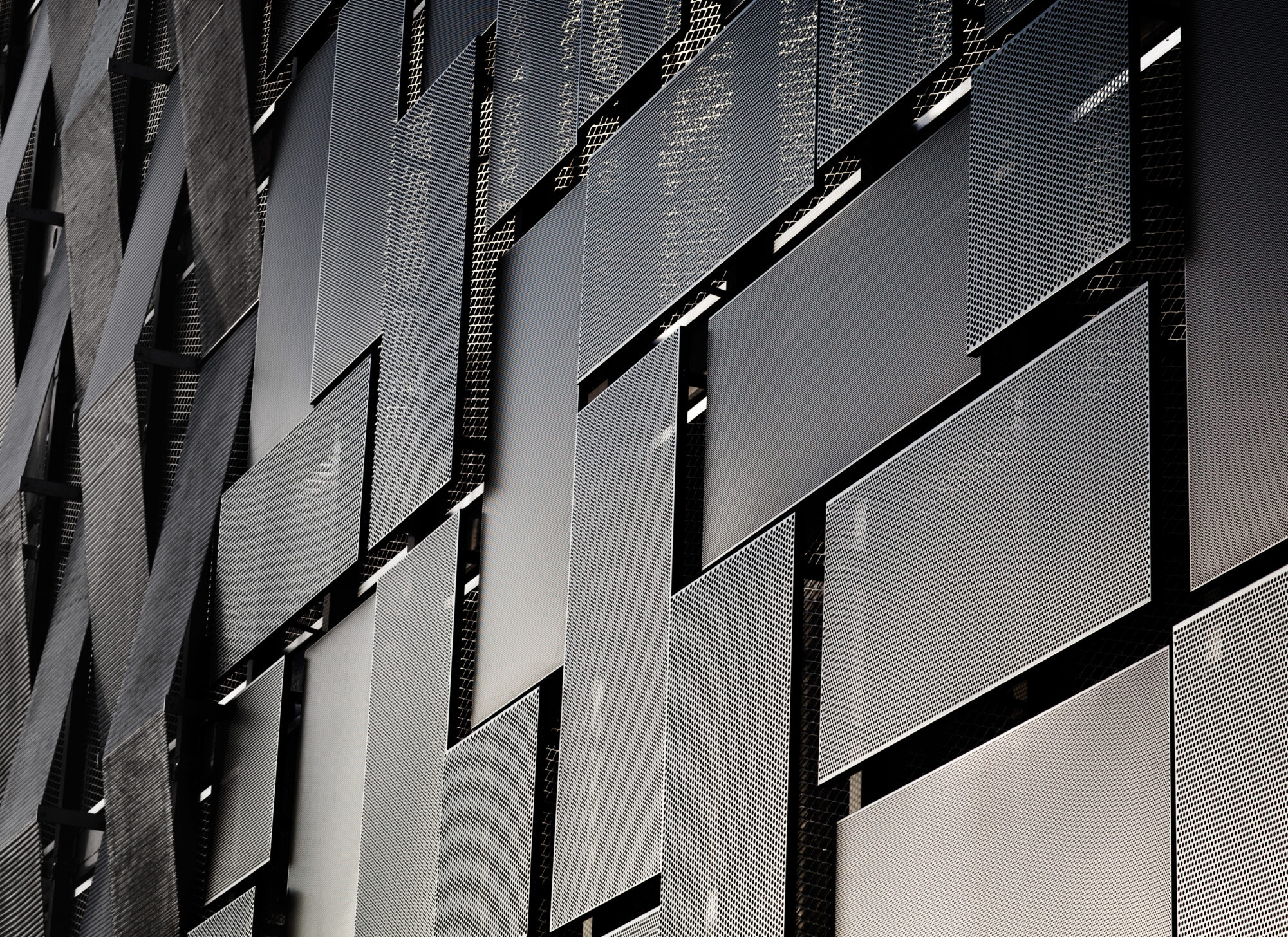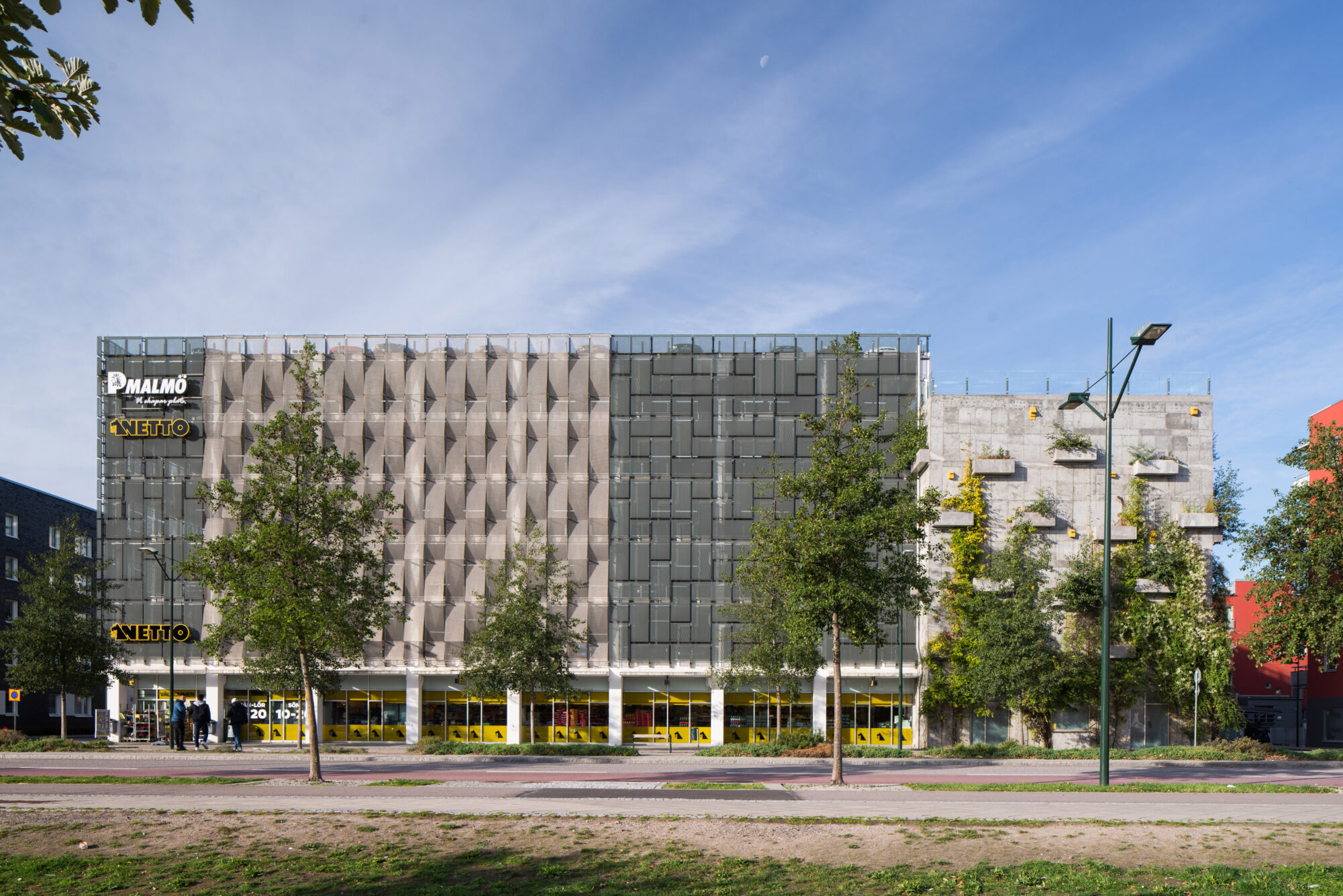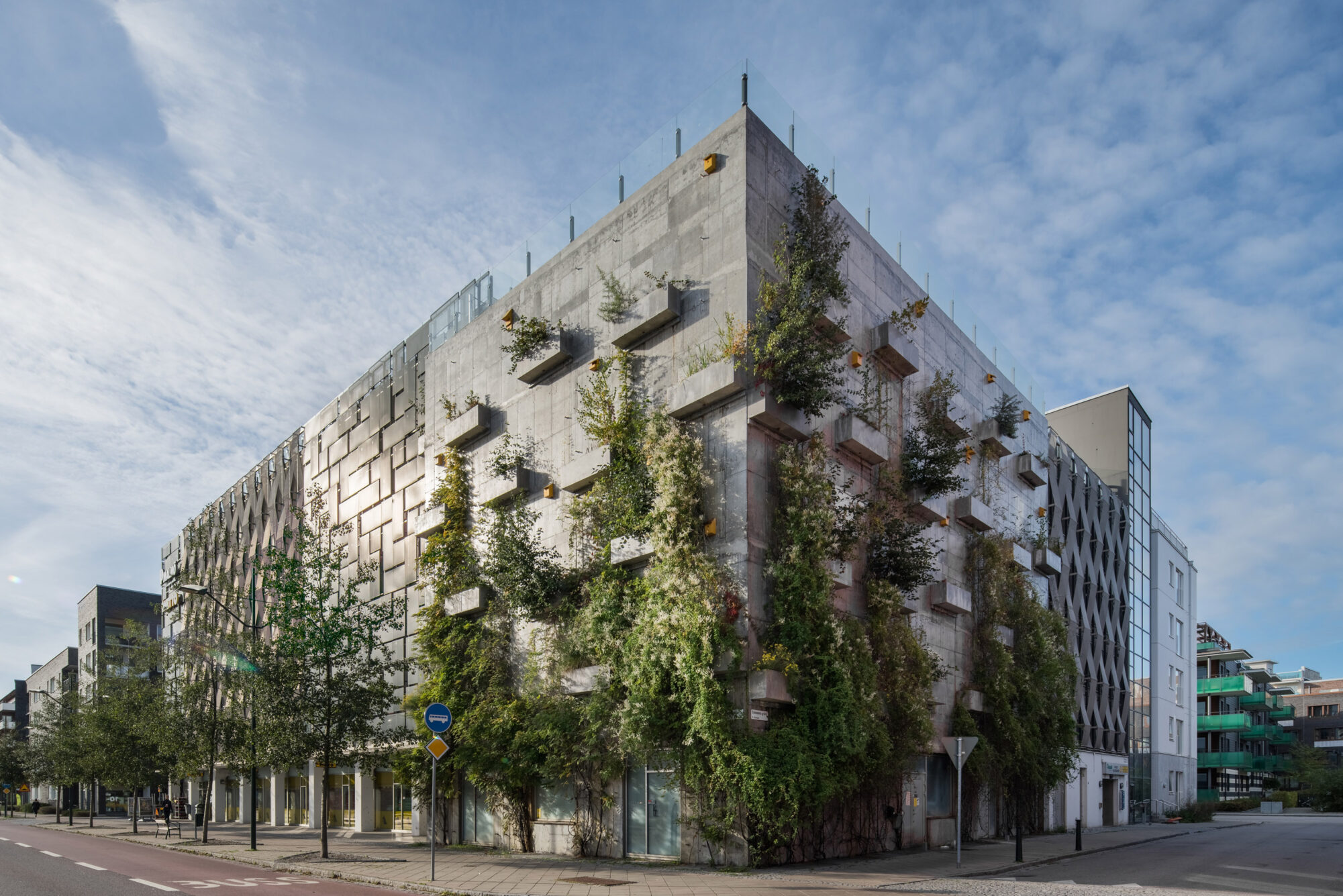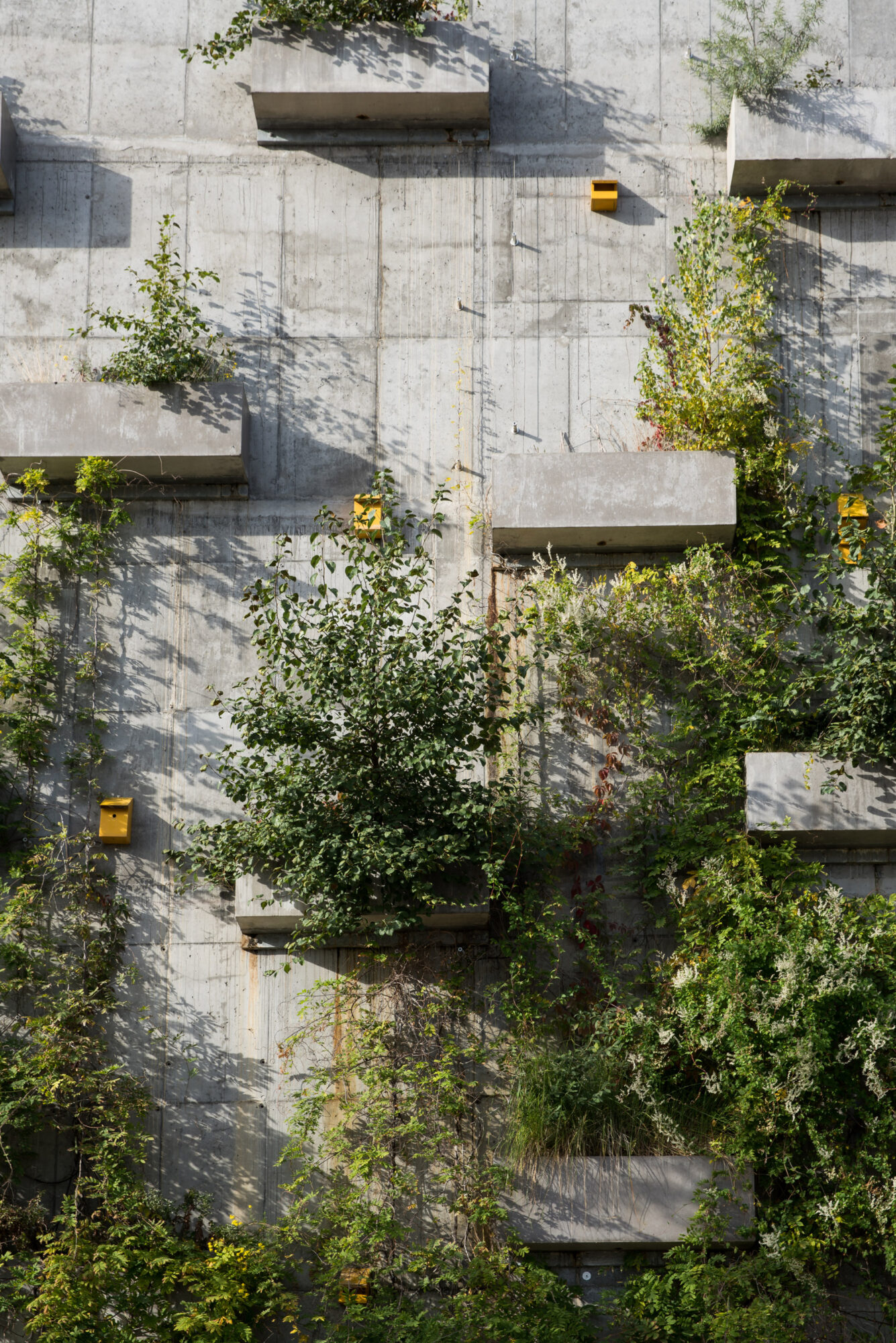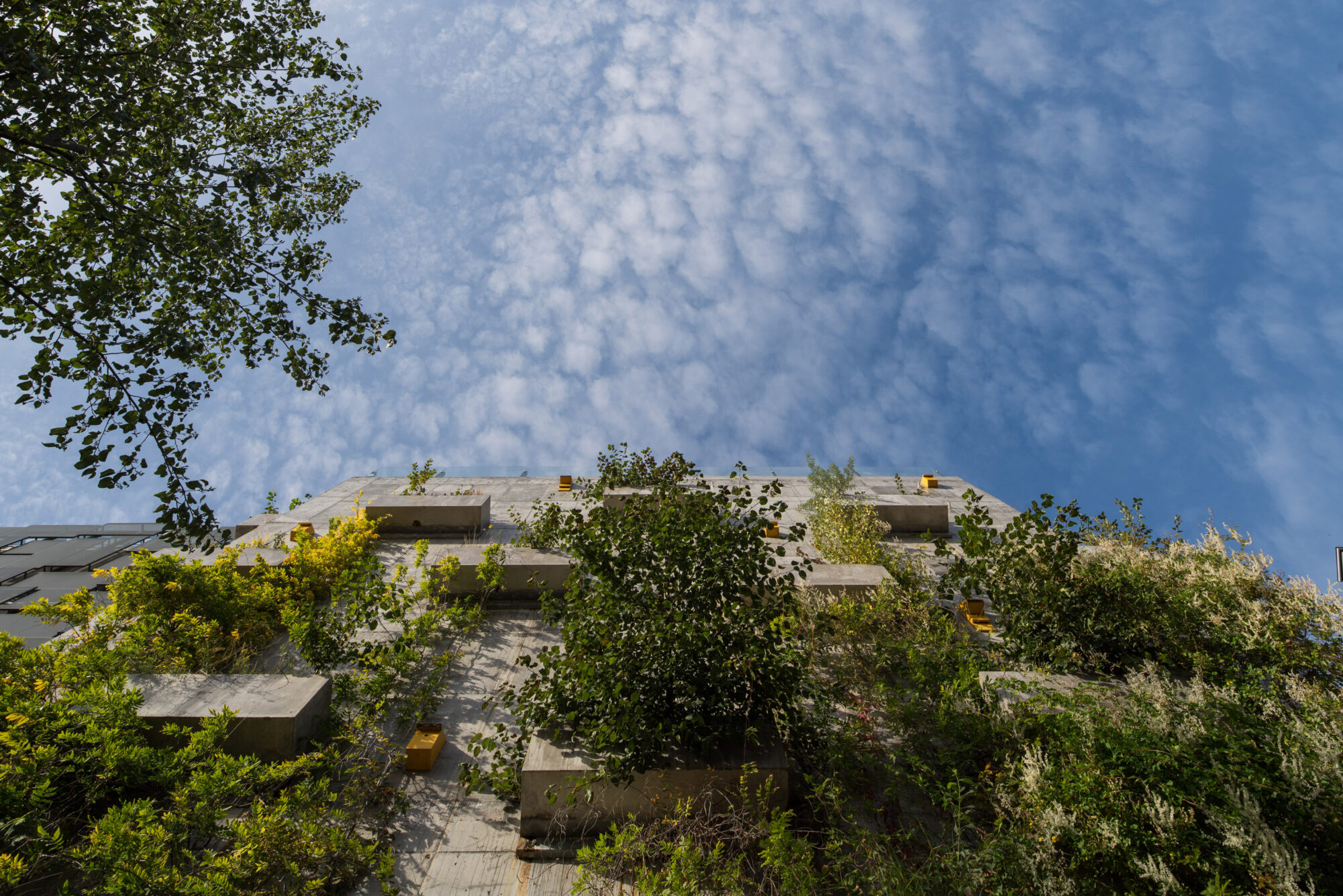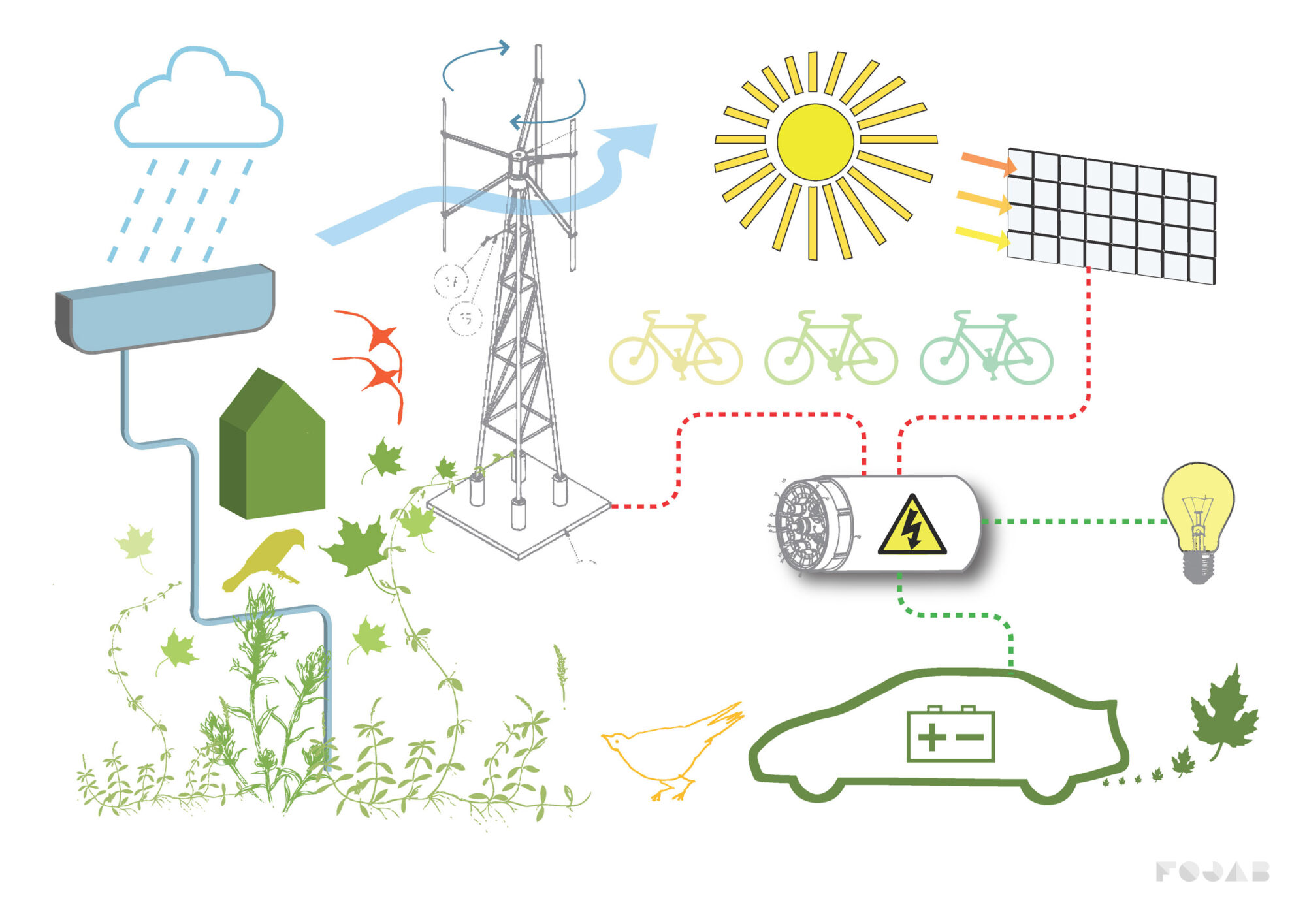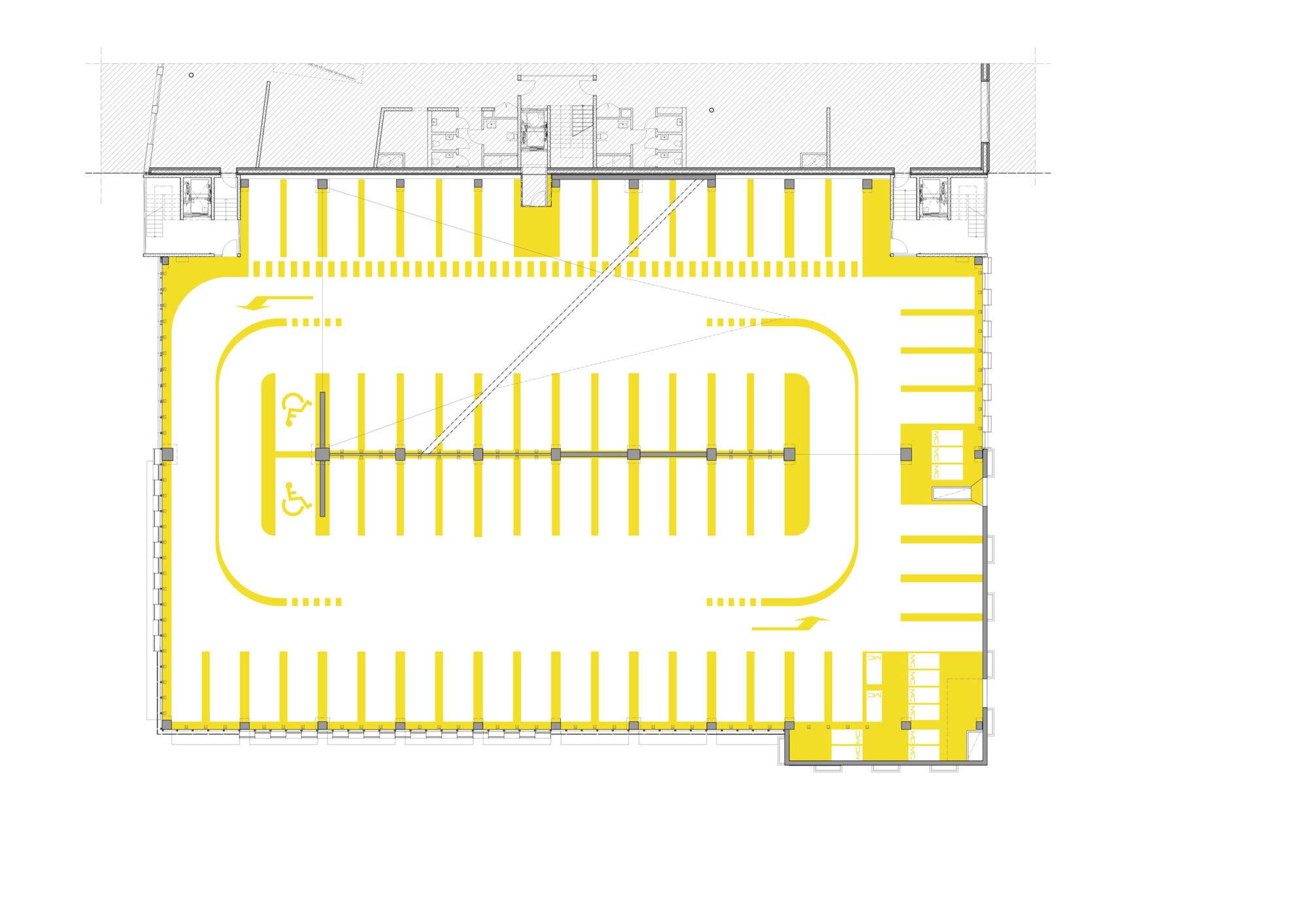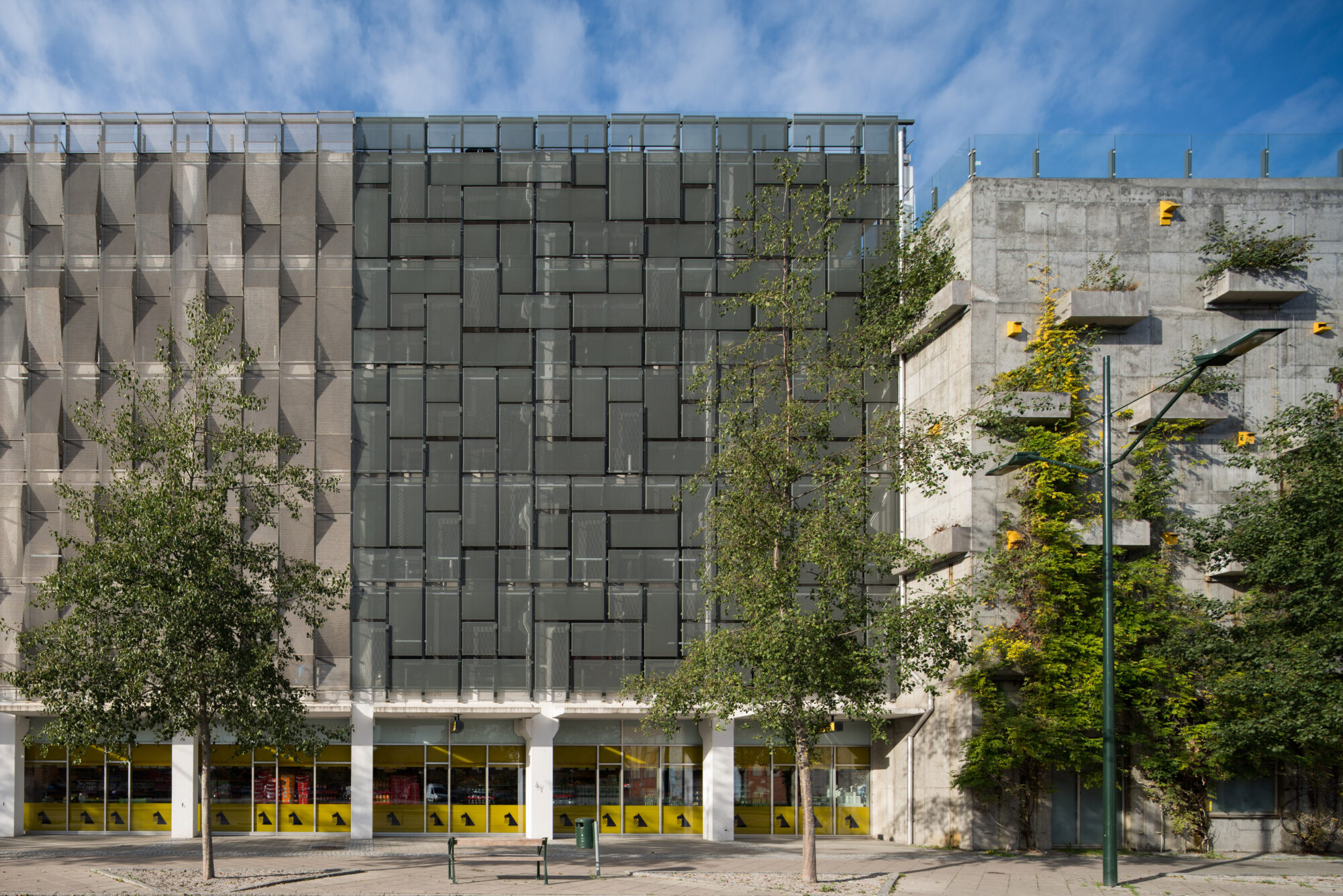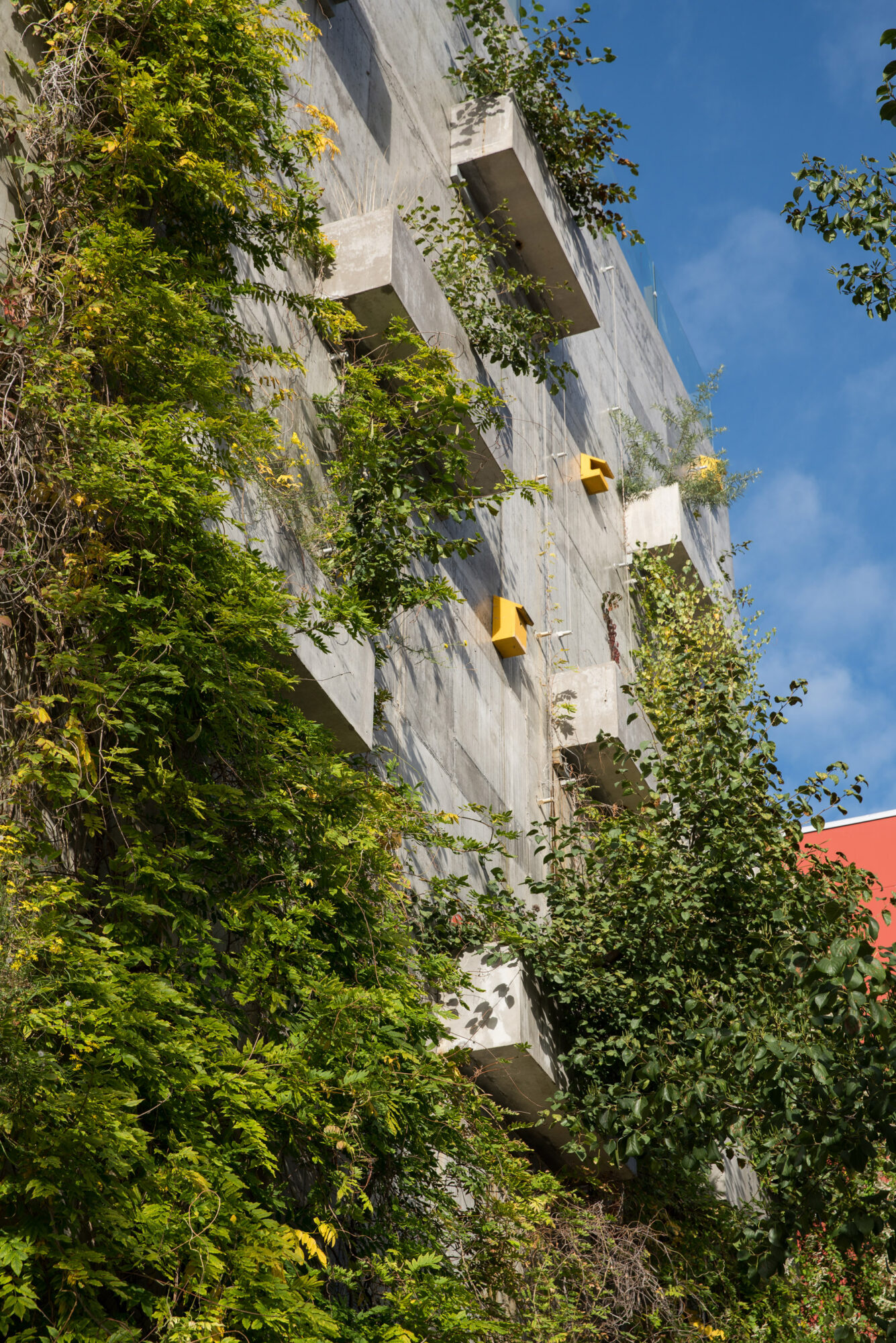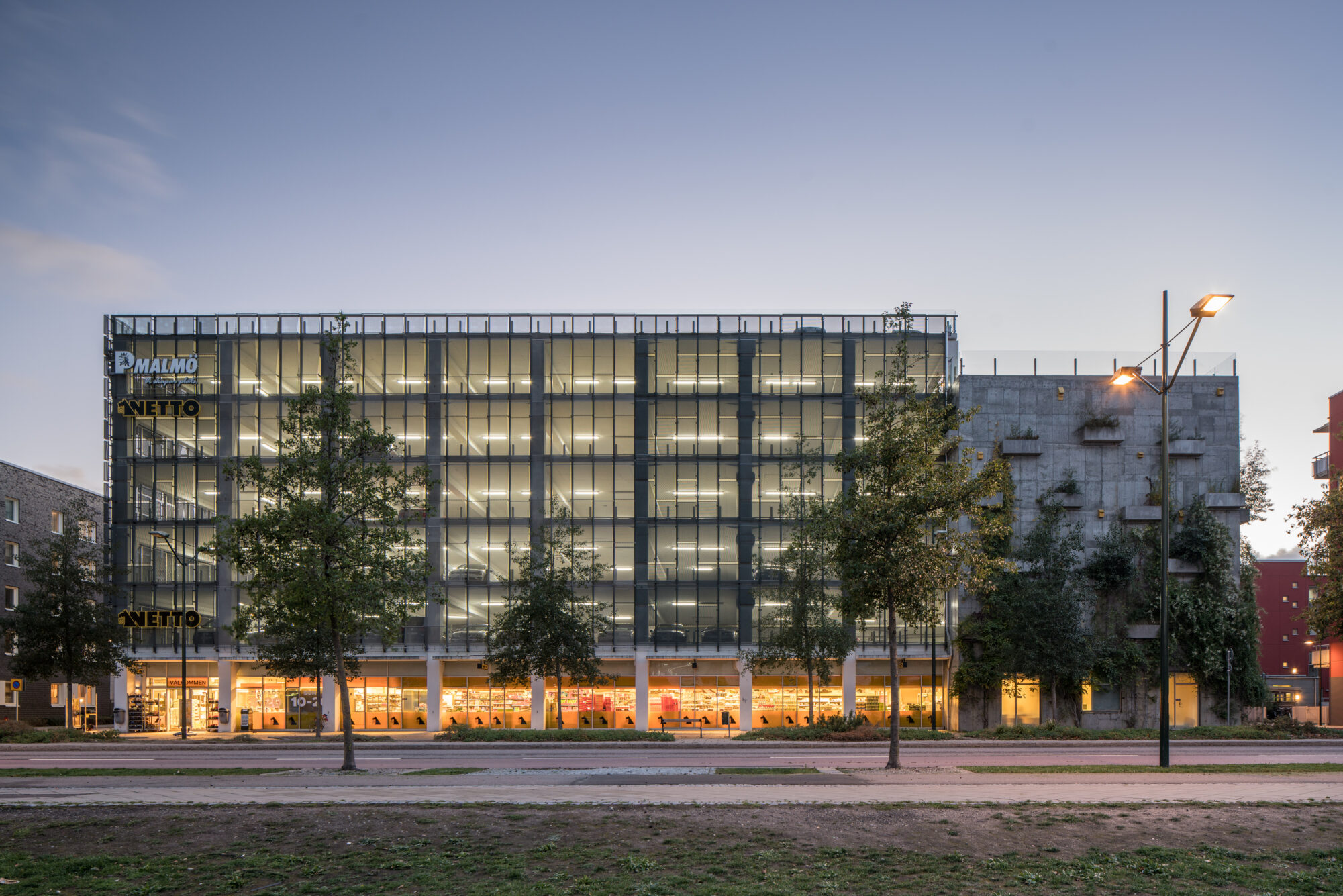The villa, Helsingkrona nation
"Friends for life" is a new student housing concept that we have developed in close cooperation with Helsingkrona nation in Lund. The form of accommodation is most reminiscent of large apartments.
The villa at Helsingkrona Nation is an eight-storey building with a ten-room apartment on each floor. On the top floor there is a smaller version of the large apartment with five rooms. Each student has their own bedroom, toilet and shower, but shares the kitchen, dining area and living room. The generous common areas with spectacular ceiling heights are integrated into the layout in a completely different way to the traditional student corridor. There are balconies with growing spaces and a communal rooftop terrace with views for miles. On the ground floor, a restaurant serves as a soft interface between the students and the rest of the city.
The Villa has several clever features such as site-built furniture, recessed lighting and smart storage to minimize wear and tear when moving in and out, requiring less new purchases for new students.
The design of the Villa encourages meetings and socializing. But just as important as social sustainability is economic and ecological sustainability. The large apartments are extremely compact and weighted in favor of the common areas. In this way, the building's footprint and material consumption can be minimized and thus construction costs and rent.
The new building consists of 65 student apartments, a restaurant and common rooms. The villa is actually an extension to Sten Samuelsson's original student housing building Helsingkronagården, which was built in the 1950s. The project includes both the construction of the villa and the renovation of the facade of Helsingkronagården, returning it to its original all-white facade expression, although the balcony fronts are now made of sheet metal instead of the original white concrete, which became too heavy.
White sheet metal thus became a natural choice for Villan as well, but here in the form of cassettes of relatively thick and robust aluminum. At the same time, Villan continues the gradual shift to the east that Helsingkronagården is also designed with, which provides space to create a completely new square facing west.
In a nod to Helsingkrona's Tornet building, which was completed in 2014, the Villa has been given window surrounds and movable shutters in copper color. Naturally, this is a match for the Tower's copper facade. In this way, the villa combines both Sten Samuelsson's 50s and the Tower's 2010s.
We have assisted Helsingkrona nation all the way from idea to occupation. We have developed a new detailed plan in collaboration with Kristianstad Nation, Akademiska Hus and Svenska Hus who own the neighboring properties. FOJAB has also been responsible for designing the tender documents as an architect and general consultant. Subsequently, we have had a double assignment with a clear organizational division: we have been the client advisor for Helsingkrona nation and we have designed construction documents for the contractor.
NCIF - National Center for Sport & Public Health
Together with the sports movement, Hemsö wants to develop a new type of sports facility in Lund. A national center for sport and public health, NCIF, which will promote and encourage movement for more people throughout their lives. NCIF will contain both indoor and outdoor areas for physical training, education and research.
Today, Kunskapsstråket runs northeast from Lund C past the university, LTH and Science Village, with ESS and MAX as its destination. As a counterpart to this, the Activity Route is now being established to the south, a route focusing on health, movement and recreation that runs from Bollhuset and Stadsparken, via Högevallsbadet, Arenaområdet and the new train station and down to Källbybadet and the nature reserve along Höje å.
FOJAB is working together with Hemsö and Lund Municipality to test the establishment of NCIF as an important destination point in Aktivitetsstråket, together with Källbybadet and Höjeådalen. The planning program will describe how NCIF can be designed and integrated into the area with a focus on maintaining and strengthening existing green areas, cultivation, sports and recreation. The new train station west of Klostergården and a new pedestrian and bicycle tunnel under the railway will affect flows and communication routes in the area, and increase the possibilities of creating a new meeting place in Lund.
Vänersborg District Court
FOJAB is designing a new court building in Vänersborg - a sharply cut volume that has been processed in relation to its program content and at the same time relates to its urban situation.
THE PLACE
The new court is located directly adjacent to one of Vänersborg's most important entrances and clearly advertises itself as you move along Edsvägen towards the city center. The court will be part of a context of solitary institutional buildings such as Gamla Lasarettet with, among other things, Vänerparkens skola and Habiliteringsmottagningen and Trons kapell.
The new court building contributes to the transition between the block structure of the city center and the green park environment. The three-storey building opens up to the south and interacts with the park. New trees and plantings further strengthen the connection. The building's entrances for the various needs of the business are oriented in relation to safety, function and flows.
HUMANITY
By withdrawing the building from the property line, surfaces are created that meet people's need to stay and move around the new court building. The base will be terraced to manage height differences and to increase the quality of the streetscape. We establish plantings with terraced seating-friendly retaining walls that also enhance orientation.
The main entrance is marked by a large tree and three-storey glazing and the recessed volume. A successive sequence of entrances and a respectful entrance square allow people to enter, stay and leave the building in a dignified manner. The court's generous waiting room is located one floor up. The facade opens up with large areas of glass, exposing the interior of the building, and the public spaces interact with the park space on the opposite side of the street. The fact that the public areas are located one floor above street level provides a distance and a respectful distance that creates integrity for the sensitive situation that visitors to the building may find themselves in.
The court building houses around 130 workplaces, 11 courtrooms, including two security rooms, security control with an adjoining reception area, public areas, staff offices, transport and rooms for detainees. The district court will have separate entrances to all rooms and separate flows throughout the building, with separate escape routes.
FORMS
The building's design language is basically simple, where the volume is processed with a few character-creating touches. This without losing the weight and authority required to be an important representative of a sound legal system.
A green ceramic façade defines the identity of the court building and its relationship to the city, with its green copper roofs and the greenery of the surrounding parkland. The ceramic panels are slightly curved, creating effective shadows on the facade - a bit like the ripple of water on Lake Vänern. Beauty is combined with durability and efficient construction.
The facade is designed with horizontal bands that give a clear presentation of the room volumes inside. Vertical profiles that create a rhythm in relation to the underlying program and between these alternate glass and dense areas, well balanced to handle views, daylight and the high environmental ambitions. The desired degree of transparency and privacy is also regulated here. With a rational modular system and a high degree of prefabrication in the facade and frame, the building's complex program and volumes are managed.
Göta Hovrätt and kammarrätten
A court building with strong character and dignity that takes advantage of the location and urban space by Lake Munksjön.
Following a parallel assignment, Castellum, in collaboration with the Swedish National Courts Administration, chose to proceed with FOJAB's proposal for the new court buildings in Jönköping for the Göta Court of Appeal and the Administrative Court of Appeal. A unanimous jury emphasized the strong architectural design and the qualities of the urban space.
FOJAB has extensive experience of working with court buildings and the special functional requirements associated with this type of project. This, combined with a strong design, has paved the way for a high quality court building.
The new Court of Appeal building fits into the existing structure and connects the buildings along the western shore of Lake Munksjön. The building volume is built up with different scales in relation to its context and the surrounding urban environment.
The building is set back from the site boundary, creating areas for the public to stay and move around the new court of appeal. The urban spaces are also activated by distributing several different entrances around the building, creating life and movement.
The façade is designed with light sand-colored vertical and horizontal elements. The vertical elements limit direct solar radiation and reinforce the design of the building. The building has been specifically designed with the availability of daylight and the high environmental ambitions in mind. The building is designed to meet the requirements of the Miljöbyggnad Level Gold certification system.
Lund District Court
FOJAB has designed a new building for the district court in Lund. The task was to design a new government building with the aim of creating Sweden's most modern court. The new district court is the next step in the development of central Lund just west of the railroad tracks.
The current site is located between the railway tracks and Bjerredsparken, which runs parallel in a north-south direction, in central Lund. The existing building blocks to the north of the site open up to the park. The new district court fits into this structure, inviting the light and greenery of the park, while giving the park a steady end to the railroad. The function of a district court involves separate flows of people, and thus several different entrances. These are oriented around the entire building, which creates life and movement in the surrounding urban spaces. The public areas are gathered in an extended room on two levels that opens up with large glass surfaces towards the park. The copper sheet, glass and natural stone of the exterior interact with the interior environment where ash wood panels provide a warm and comfortable experience.
Facing the railway and the old city center to the east, the building rises to its full height. It is integrated into the context of the new Kristallen municipal building and provides the urban qualities of a public institution in the city. In the south towards the new travel square, the building descends to two high floors, which meet the public while retaining its public character. On the roof to the southwest, there is a terrace for the court's staff. To the west, a four-story volume embraces the park space, interacting with the adjacent Kristallen municipal building. The west facade opens up to the green park space with large glass sections, exposing the interior of the building. The relationship between glass and dense sections is well balanced to manage views, daylight and the high environmental ambitions.
The new district court was inaugurated in August 2018.
Awards:
1st prize in design competition
Lund Municipality's Urban Design Award 2018
Nominated for the 2018 Stone Award
Nominated for Building of the Year 2019
Sheet metal prize 2019
Publications:
RUM, Feb/19
ArchDaily Mars/19
Architecture magazine March/19
Triangles
From a large parking lot and a desolate backside to a public transport hub with vibrant city life in a cultural-historical environment. FOJAB has built a brand new city block in central Malmö with 190 apartments, 200 workplaces and commercial activities on the ground floors.
At street level is a two-storey shopping mall, linked to the existing shopping center. A further five floors facing the surrounding streets are residential and office buildings. From this building rises a 19-storey residential building. In the interior of the block there are further residential units and green gardens at different levels, while the car parks are two levels below ground.
In Triangelgallerian, FOJAB created a square to enhance the environment for the many commuters who move in traffic, but also to provide a harmonious place for relaxation in a small-scale, dense and intense environment. To create variety and enhance the urban feel, the shops are accessed through three portals in winding aisles at street level. The square, which is located in the center and opens up through both floors, is formed by playfully placed shop boxes.
The office is located on four levels on top of the mall, two to five steps up. The main entrance is located on Rådmansgatan. Outdoor spaces in the form of roof terraces are available both in connection with the lowest floor of the office and at the top of the recessed penthouse. Secure bicycle parking is available in a raised courtyard between the new and old Triangeln. The office's tenants have a nice view of S:t Johannesplan and also visual contact with the lush inner courtyard.
At the top, both street and high-rise buildings are crowned with sections of golden brass plate. The courtyard environments are built on the roof of the mall, on three different levels with a wide range of spaces and experiences. The character and composition of the plant material provides greenery and beauty throughout much of the year and highlights the changing seasons. There are sheltered places in the shade of the pergola's creepers, offering seating via integrated benches and special play areas for children. There are also spacious grassy areas and several wooden decks to accommodate larger groups.
High Court
In the assignment to restore and rebuild the former Court of Appeal, FOJAB, as general consultant, assisted the property owner with architectural advice.
The aim has been to transform the premises of the former Court of Appeal from a dull and tired public environment into an attractive, well-functioning and exclusive office and event facility.
The assignment has included advice in connection with project development, design and project management, site management and control responsibility.
Full rigger
In Malmö's new Fullriggaren district, FOJAB has designed a parking garage with retail space on the ground floor.
The parking garage has a clear environmental profile that includes a solar cell façade, electric car parking and a car pool to which residents in the area have free membership for the first few years.
The facades of the building are made up of tensioned metal mesh, perforated sheets, and a concrete wall with climbing plants and yellow birdhouses - contributing to the greenery and biodiversity of the area.
